![]()
Eugène Delacroix, Christ on the Sea of Galilee, 1853 or earlier
| Artist | Eugène Delacroix, French, 1798–1863 |
| Title | Christ on the Sea of Galilee |
| Object Date | 1853 or earlier |
| Medium | Oil on canvas |
| Dimensions (Unframed) | 18 x 21 1/2 in. (45.7 x 54.6 cm) |
| Credit Line | The Nelson-Atkins Museum of Art. Purchase: William Rockhill Nelson Trust through exchange of the gifts of the Friends of Art, Mr. and Mrs. Gerald Parker, and the Durand-Ruel Galleries; and the bequest of John K. Havemeyer, 89-16 |
Catalogue Entry
Citation
Chicago:
Asher Ethan Miller, “Eugène Delacroix, Christ on the Sea of Galilee, 1853 or earlier,” catalogue entry in ed. Aimee Marcereau DeGalan French Paintings and Pastels, 1600–1945: The Collections of the Nelson-Atkins Museum of Art (Kansas City: The Nelson-Atkins Museum of Art, 2021), https://doi.org/10.37764/78973.5.402.5407.
MLA:
Miller, Asher Ethan. “Eugène Delacroix, Christ on the Sea of Galilee, 1853 or earlier,” catalogue entry. French Paintings and Pastels, 1600–1945: The Collections of the Nelson-Atkins Museum of Art, edited by Aimee Marcereau DeGalan, The Nelson-Atkins Museum of Art, 2021. doi: 10.37764/78973.5.402.5407.
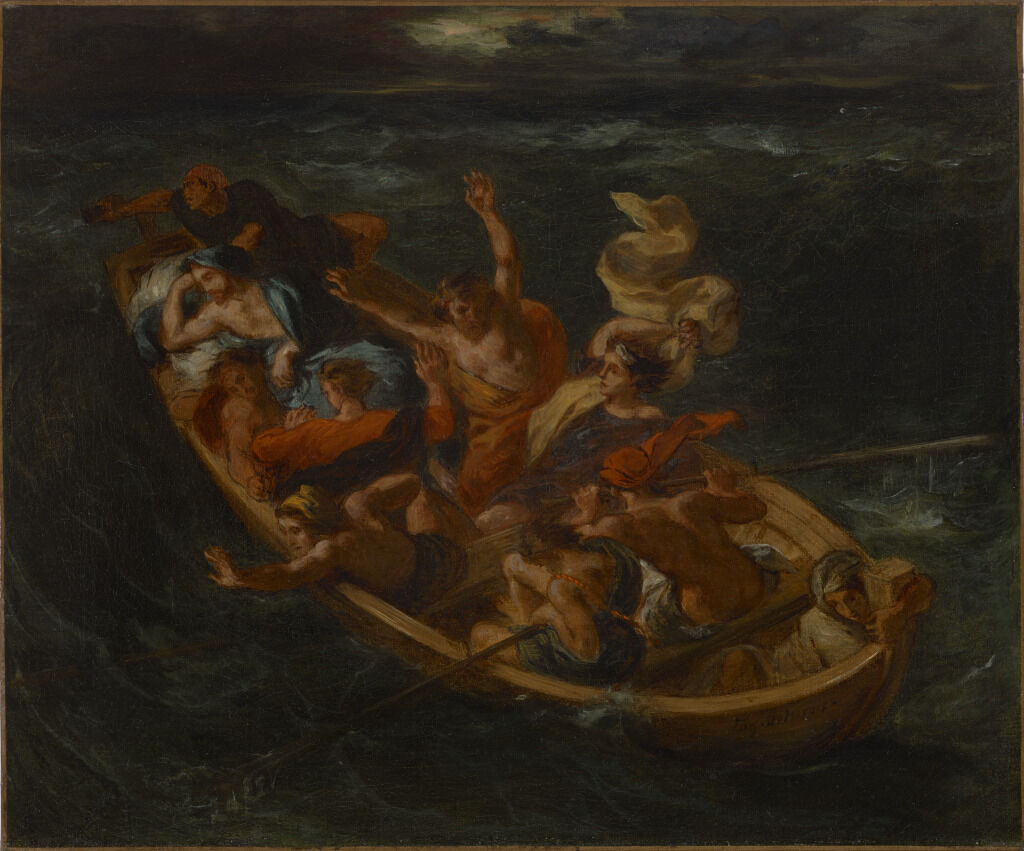
The subject of the Nelson-Atkins sketch is a New Testament lesson of faith. It depicts Christ sleeping in the moments before he is awakened by his terrified disciples during a storm on the Sea of Galilee (sometimes called the Lake of Genesareth and other names). Shortly afterward, Christ will reproach them for their lack of trust in providence. The story is recounted in three of the Gospels: Matthew 8:23–27, Luke 8:22–25, and Mark 4:36–41. Luke’s description is the most animated:
Now it came to pass, on a certain day, that he went into a boat with his disciples; and he said unto them, Let us go over unto the other side of the lake. And they launched forth. But as they sailed he fell asleep; and there came down a storm of wind on the lake, and they were filled with water, and were in jeopardy. And they came to him, and awoke him, saying, Master, master, we perish. Then he arose, and rebuked the wind and the raging of the water; and they ceased, and there was a calm. And he said unto them, Where is your faith? And they, being afraid, marveled, saying one to another, What manner of man is this! For he commandeth even the winds and the water, and they obey him.5Luke 8:22–25 (King James Version).
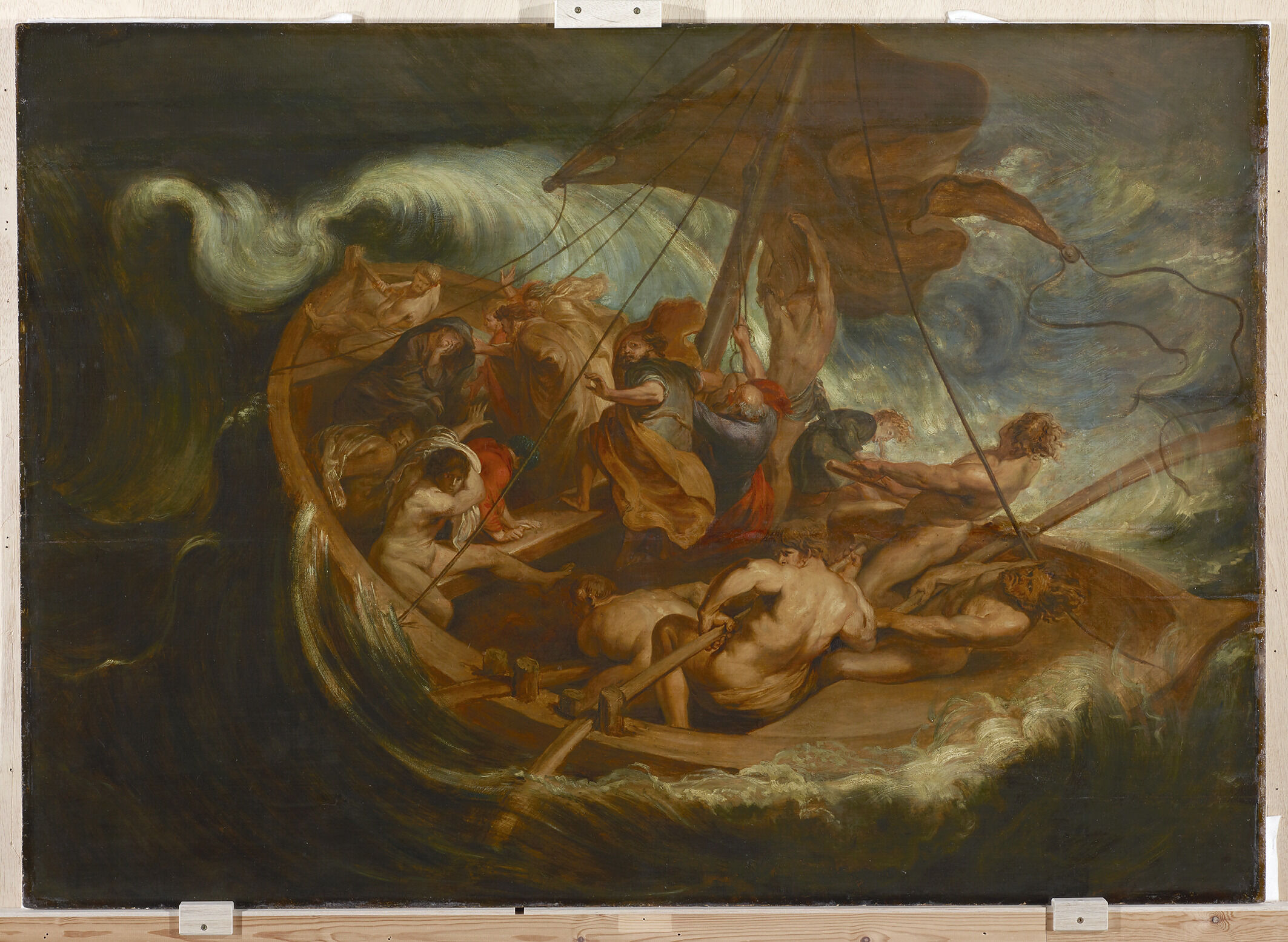
In the Nelson-Atkins sketch, the boat holding Christ and nine other figures is oriented diagonally, from the top left to the bottom right, nearly filling the composition. The stern is near the crest of a massive wave, and the bow is at its trough, effectively cupping the boat in the curve and pushing it outward to afford an unimpeded view of the figures within. The pictorial field is dominated by the dark sea, brushed broadly in thin washeswash: An application of thin paint that has been diluted with solvent. of paint, with only a sliver of sky at the top, the line between them punctuated by sea spray and foam.
Delacroix reveled in enlivening tight, multifigured groupings by interlocking and overlapping bodies and draperies to create surprising juxtapositions. He frequently worked out such arrangements in drawings. Although it is possible that he made preparatory drawings for the rowboat series of Christ on the Sea of Galilee, none are known. Based on the physical evidence available, one may conjecture that the Nelson-Atkins sketch was the artist’s first pictorial iteration of the theme. The sketch’s painterliness is its dominant quality, such that the work may appear crude at first glance; whatever fine details there are, such as the rendering of Christ’s face, are isolated and few in number. Nevertheless, the sketch is not unfinished in the sense that the artist intended to carry it further. It is, rather, an autonomous work that preserves its aspect of spontaneity. Indeed, Delacroix left it in a state that reveals the working process that brought it into being. The artist pondered the question of finish often, as two journal entries from the period leading up to the Christ on the Sea of Galilee campaign show. On October 16, 1850, under the heading “On pictorial license,” Delacroix noted, “Every master owes to this what are often his most sublime effects. Rembrandt’s unfinished quality, Rubens’s extravagance. Mediocre artists cannot be daring in this way. They are never outside themselves.”9Delacroix, entry dated October 16, 1850, Journal, 1:550. On April 13, 1853, he wrote, “One always has to spoil a picture a little in order to finish it. The last touches, which are given to bring the different parts into harmony, take away from the freshness. It has to appear in public shorn of all those happy negligences which an artist delights in.”10Delacroix, entry dated April 13, 1853, Journal, 1:631.
The artist’s words are perfectly in accord with the spiritedness of the Nelson-Atkins sketch. They also help to show that insofar as his creative process was concerned, Delacroix could, if it suited him, place a premium on intuition over method. In the case of Christ on the Sea of Galilee, the complicated arrangement of figures is all the more impressive given the way in which Delacroix built the composition from the ground layerground layer: An opaque preparatory layer applied to the support, either commercially or by the artist, to prevent absorption of the paint into the canvas or panel. See also priming layer. up (see Technical Entry). Lively figures alternately encircle and punctuate Christ’s imperturbable form, the brightest area in the sketch. At the upper left, the helmsman is almost entirely outside the boat, straining to hold a course. A standing man at the center flings his arms upward to stabilize himself, his right arm delineating Christ’s back. A seated figure in red and blue rounds out Christ’s lower body with his arms and shoulders, his head seen in profil perduprofil perdu: French for "lost profile." The artist shows their subject without the profile of the head being visible. A profile of a human head that is not seen directly from the side, but more from the back of the head. silhouetted against Christ’s form. A fourth man, seated deep in the boat, extends his arms along the gunwales.
Moving toward the bow, two men rooted to the same seat hurl themselves in opposite directions, away from one another. The one above, portrayed frontally, reaches back with his right arm to clutch a fluttering white drapery. The one below, seen from behind, reaches forward with an open hand. It is unclear from the sketch what he reaches for, but this question is resolved in subsequent versions, in which an irretrievable oar is visible at and just beneath the surface of the water. (The forcefulness of that figure’s extended left arm is balanced by the movement and costume of the one in red and blue described above.) In contrast to these two figures are two oarsmen who lean into one another. Occupying the bow is a youth wrapped in a white cowl, whose form is articulated with impressive economy: a few strokes of white paint and more bodied highlights for the drapery, and details of the face and hand quickly drawn in brown pigment with the point of the brush. This figure’s androgyny seems keyed to heighten the overall effect of vulnerability.
Delacroix’s approach to composition varied widely. Preparatory drawings of a fluid, open-ended nature exist in great numbers for some works but not others. Despite their absence in the present case, there is a gestural, graphic quality to the manner in which Delacroix rendered the figures, a number of whose forms—the pair of oarsmen, for instance—are rendered by means of ovoid shapes that relate to the artist’s manner of “drawing by rounds” or boules.11On this technique, see Ashley E. Dunn, “Delacroix as a Draftsman: Through the Lens of the Karen B. Cohen Collection,” in Ashley E. Dunn, Colta Feller Ives, and Marjorie Shelley, Delacroix Drawings: The Karen B. Cohen Collection, exh. cat. (New York: Metropolitan Museum of Art, 2018), 33, 152n96. In contrast to the rowboat series, for which there are no known drawings of this type representing the early stages of formulating the composition, there are at least three known sheets representing exploration of the sailboat compositions of the Bührle and Walters pictures. Two are in the Musée du Louvre, Paris (RF 9493, RF 42660). For another, whose present whereabouts are unknown, see Maurice Sérullaz, Mémorial de l’éxposition Eugène Delacroix, exh. cat. (Paris: Musée du Louvre, 1963), cat. no. 451, pp. 343–44, as in the collection of Claude Roger-Marx, Paris. He very likely first worked out the composition directly on the canvas, initially by means of a drawing: traces of underdrawingunderdrawing: A drawn or painted sketch beneath the paint layer. The underdrawing can be made from dry materials, such as graphite or charcoal, or wet materials, such as ink or paint. are visible to the naked eye through the paint layer around the head and shoulders of the figure at the vessel’s prow. It is entirely plausible that the function of this sketch was to fix an idea that would be resolved, eventually, in a finished picture.
That was undoubtedly the case with the lost oar, which appears in the Portland picture (see Fig. 1). In this subsequent work, Delacroix introduced innumerable details and refined the color relationships. For example, the man who has lost his oar now wears a yellow cap; there is a braided red rope across the back of the rower on the left; his counterpart wears a flowing red cloth on his head; and water drips from his oar. The youth in the bow now hugs the prow, his forearm and hand visible, and the cowering countenance in the Nelson-Atkins sketch has been replaced by a more active expression of fear. The horizon is no longer defined by the crest of a single wave, as in the sketch. Instead, the sea meets the sky at an inestimable distance from the foreground.
Delacroix’s progress on the Portland painting can be gauged from entries in his journal. On April 30, 1853, he noted that he had sketched out “Christ in the storm” for his friend Grzymala, and on June 28, he “finishes” this painting (the Portland version).12Delacroix, entries dated April 30, 1853, and June 28, 1853, Journal, 1:645 and 1:673. On October 9, 1853, he was working on another version, a “Christ in the boat” after an ancienne esquisse; this is a reference to the Nelson-Atkins sketch and its role as the source for, most likely, the version now at the Metropolitan Museum of Art.13Delacroix, entry dated October 9, 1853, Journal, 1:684. The canvas underway on that date is presumably the same one Delacroix had previously mentioned on September 26, 1853, as “Christ dans le bateau” (p. 680) and would subsequently describe, on October 10, as “Christ dans la barque” (p. 684); he would refer to it again, on October 13, as “Christ dormant dans la tempête” (p. 689). This painting, produced for the dealer Francis Petit, is generally agreed to be the version at the Metropolitan Museum of Art. Delacroix did not mention the use of drawings in executing the Met version, but it is likely that he did employ them to transfer the Grzymala/Portland painting’s composition, including the majority of its component details.14There are at least two drawings, both quite large, which seem to correspond most closely to the composition of the Grzymala/Portland picture. The first, in the Harvard University Art Museums (1943.813), was executed in graphite on tracing paper (laid down) measuring 14 1/8 x 20 5/8 in. (35.7 x 52.5 cm); see Agnes Mongan, David to Corot: French Drawings in the Fogg Art Museum, ed. Miriam Stewart (Cambridge, MA: Harvard University Press, 1996), no. 148, pp. 156–57, as attributed to “Follower of Delacroix.” The Harvard sheet bears the stamp of the Delacroix atelier sale (see “838a,” in Frits Lugt, Les Marques de Collections de Dessins et d’Estampes, editions of 1921 and 1956, published online by Fondation Custodia, accessed January 5, 2021, <http://marquesdecollections.fr>). For the second drawing, whose present whereabouts are unknown, see Floralies 1986: Importants Tableaux Modernes (Versailles: Maître Georges Blache, June 11, 1986), no. 1, p. 6, described as “dessin à la mine de plomb sur papier teinté, 36 x 53 cm” (14 3/16 x 20 7/8 in.) and stamped with the artist’s monogram at the lower left, with a citation to Lugt 838. The stamp is not legible in the illustration, however, making it impossible to verify whether it is in fact Lugt 838 (indicating the collection of Delacroix’s assistant Pierre Andrieu, found on drawings both by Delacroix and Andrieu) or Lugt 838a (Delacroix’s estate stamp). The third drawing, also in pencil, whose present whereabouts are also unknown, measures 13 3/8 x 18 1/2 in. (34 x 47 cm); see XIX and XX Century French Paintings and Drawings, exh. cat. (London: Lefevre Gallery, November–December 1964), no. 29, pp. 26–27; based on the reproduction, it is the least nuanced of the three. Close examination of these sheets, together with an infrared reflectogram of the Nelson-Atkins sketch—if it were to reveal extensive underdrawing—would undoubtedly shed additional light on the unfolding of the series.
Given the concern that Delacroix expressed on April 15, 1853, about having to “spoil” a painting in order to finish it, it is reasonable to ask how he judged the canvases on the theme of Christ on the Sea of Galilee that he went on to produce after the Nelson-Atkins sketch. He did not comment on any of them specifically. However, a remark written as if to qualify his earlier statement casts light on the matter. On April 20, he wrote, “An artist does not spoil a picture by finishing it; but, in closing the door to [open] interpretation [by] renouncing the vagueness of the sketch, he reveals his personality more fully, thereby displaying the full scope of his talent, but also its limitations.”15Delacroix, entry dated April 20, 1853, Journal, 1:637. This reflection sheds light on the stakes for each decision Delacroix made as he executed the various versions of Christ on the Sea of Galilee, decisions about color, details, background, and so on.
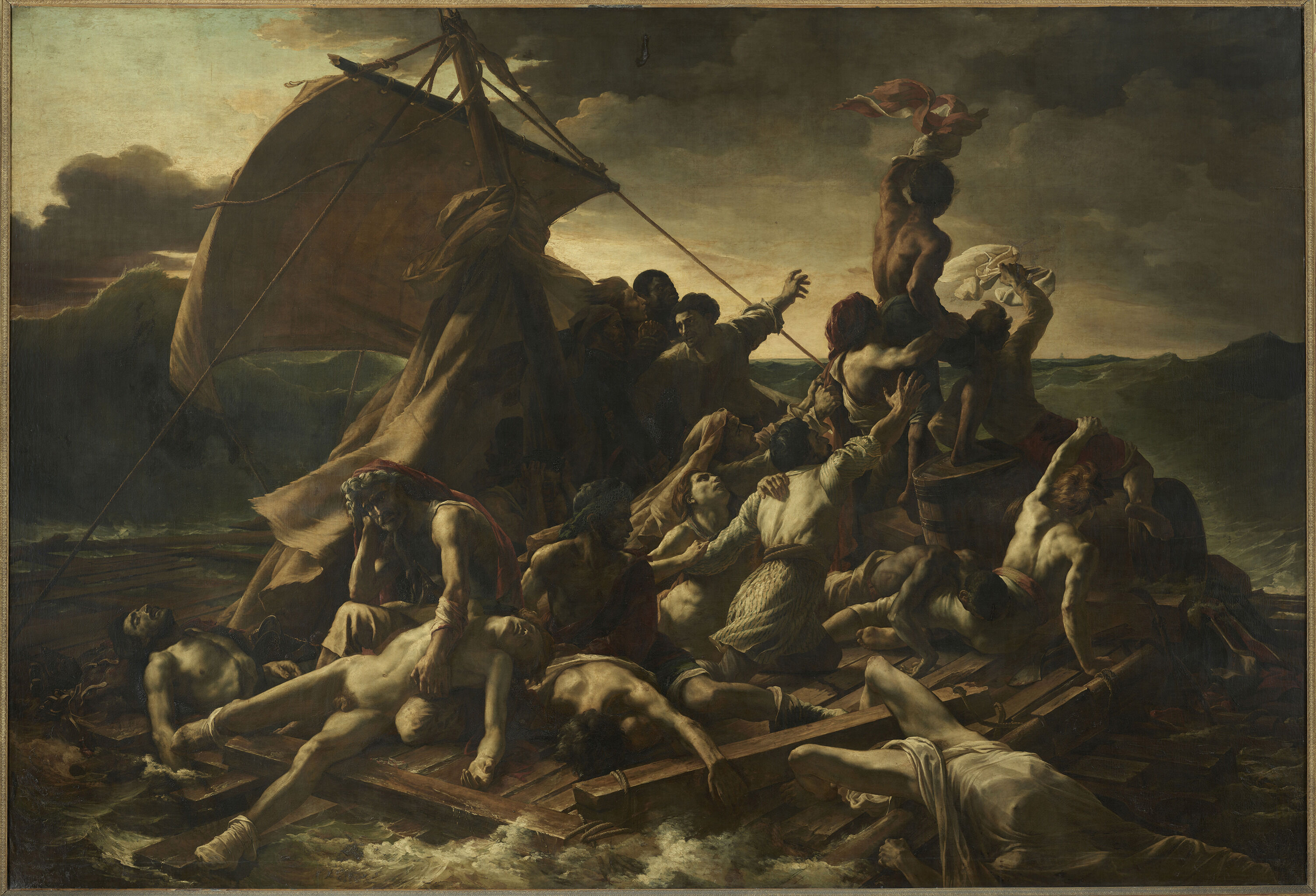
In the mid-1820s, Delacroix began to contemplate an ambitious marinemarine: Term used to describe a variety of painted sea subjects, including beach scenes, vistas of the open sea, and shipwrecks or portraits of ships.
subject that he eventually painted in 1840 and exhibited at the Salon of
1841, The Shipwreck of Don Juan (Fig. 4). Drawn from Lord Byron’s epic
poem, initially published in parts between 1819 and 1824, it is a scene
of castaways in a lifeboat, some of whom draw lots to determine the
order in which they will cannibalize each another. Though not life-size,
it is considerably larger than a standard easel picture. Both its size
and its uncommonly extended rectangular shape amplify the coffin-like
quality of the boat; the men and women are effectively doomed between
the sea and the sky. The anxiety exuded by Don Juan—a combination of
shock and resignation in the face of circumstances almost too repugnant
to contemplate—is of a very different character from the fear that
Christ’s disciples experience as the result of their lapse of faith in
the face of nature’s blind rage. Lee Johnson detected a connection
between Christ on the Sea of Galilee and another painting dating to
the period of Don Juan’s conception in 1820s. The rowboat versions of
Christ on the Sea of Galilee, culminating, in his view, in the canvas
at the Met, “mark a resolution of the spatial disunity of the Death of
Sardanapalus” (Fig. 5), another painting inspired by an epic poem by
Byron.
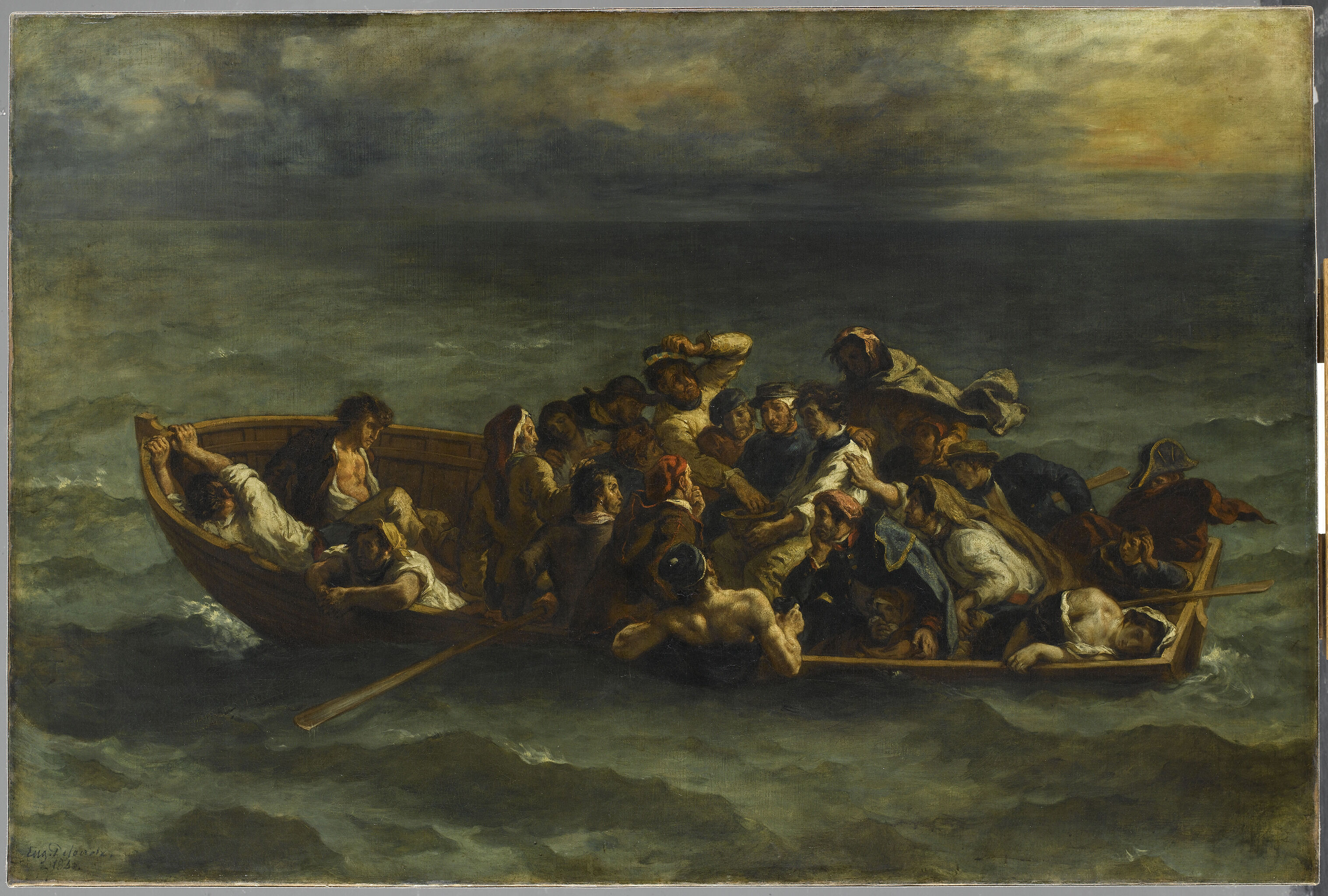 Fig. 4. Eugène Delacroix, The Shipwreck of Don Juan, 1840, oil on canvas, 53 1/8 x 77 3/16 in. (135 x 196 cm), Musée du Louvre, Départment des Peintures, Paris (RF 359). Photo (C) RMN-Grand Palais (musée du Louvre) / Gérard Blot
Fig. 4. Eugène Delacroix, The Shipwreck of Don Juan, 1840, oil on canvas, 53 1/8 x 77 3/16 in. (135 x 196 cm), Musée du Louvre, Départment des Peintures, Paris (RF 359). Photo (C) RMN-Grand Palais (musée du Louvre) / Gérard Blot
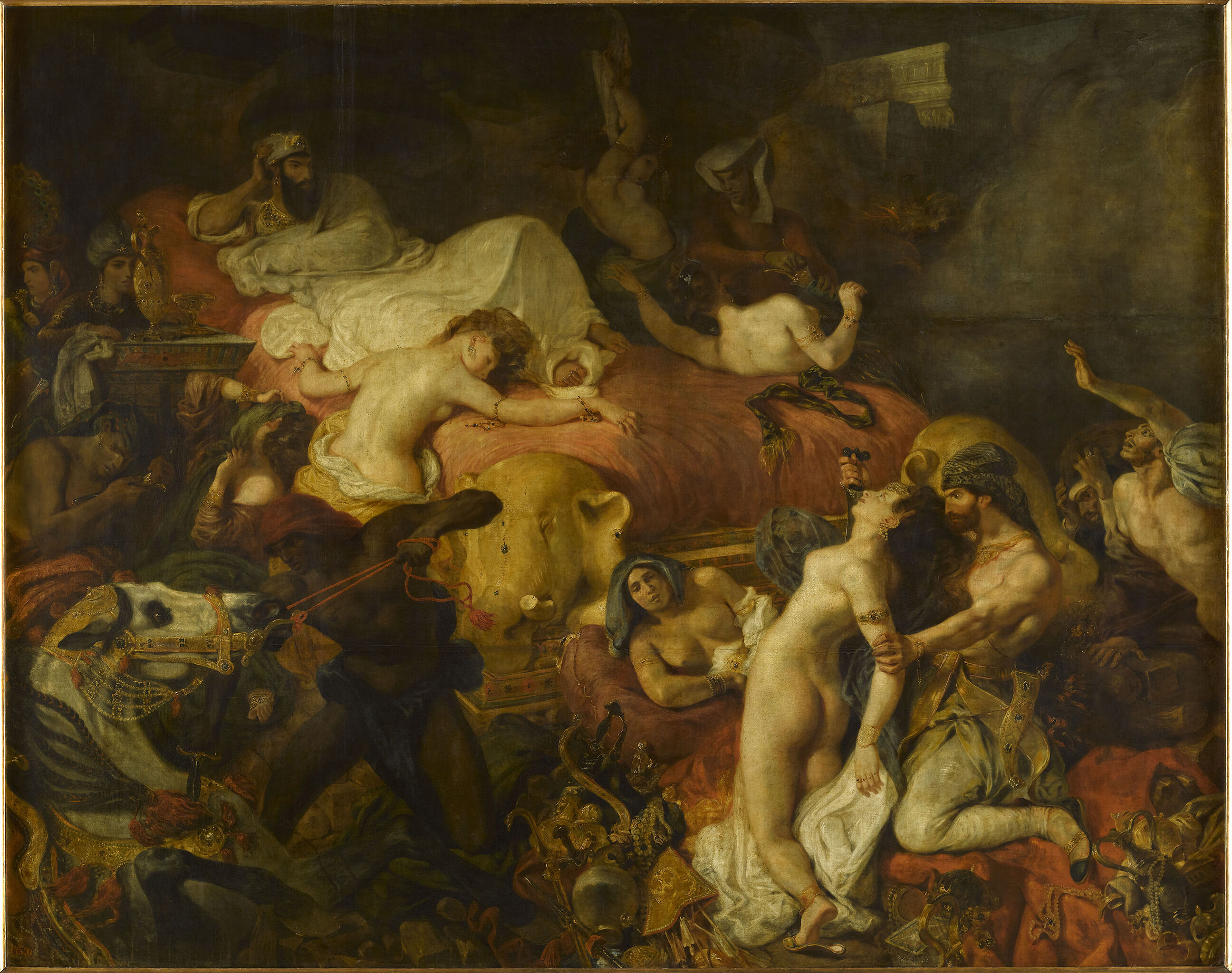 Fig. 5. Eugène Delacroix, The Death of Sardanapalus, 1826–27, oil on canvas, 155 1/2 x 194 7/8 in. (3.9 x 4.9 cm), Musée du Louvre, Départment des Peintures, Paris (RF 2346)
Fig. 5. Eugène Delacroix, The Death of Sardanapalus, 1826–27, oil on canvas, 155 1/2 x 194 7/8 in. (3.9 x 4.9 cm), Musée du Louvre, Départment des Peintures, Paris (RF 2346)
Delacroix was an active reader and a fundamentally literary artist. He was drawn to motifs that recurred in unrelated narrative contexts but were linked in his own mind, which were then fodder for protracted artistic engagement. Such is the case with various compositions that feature a figure of profound calm—serene, asleep, or calculating—isolated in the midst of a maelstrom. Early examples are the figures of Sardanapalus and Don Juan (usually identified as the man wearing a bicorne); in 1846 he would add another, the unconscious heroine of The Abduction of Rebecca (Metropolitan Museum of Art, New York), who is the only note of calm in a scene of dramatic violence. These antiheroes bear an unlikely kinship with Christ on the Sea of Galilee.
Notes
-
Eugène Delacroix, entry dated October 9, 1853, Journal, ed. Michèle Hannoosh (Paris: José Corti, 2009), 1:684.
-
See Lee Johnson, The Paintings of Eugène Delacroix: A Critical Catalogue, vols. 3 (text) and 4 (plates) (Oxford: Clarendon Press, 1986), pp. 232–38, no. 451, pl. 262 (Nelson-Atkins); no. 452, pl. 262 (Portland Art Museum, Oregon); no. 453, pl. 263 (private collection; formerly in the collection of Peter Nathan, Zürich); no. 454, pl. 263 (Metropolitan Museum of Art, New York); no. 455, pl. 264 (Emil Bührle Foundation, Zürich); and no. 456, pl. 265 (Walters Art Museum, Baltimore). Johnson also described four further works whose authorship he questioned or which he had not seen: no. S6 on pp. 304–05, pl. 321 (Philadelphia Museum of Art); no. S7 on p. 305, pl. 321 (Museum of Fine Arts, Boston); copy of no. 456, described on p. 238, not illustrated (Nationalmuseum, Oslo); and no. L185 on p. 286, not illustrated (lost, possibly another subject). Johnson published illustrations of a number of the works as well as additions and corrections in subsequent volumes. There is also a version in a private collection (provenance: Fernand Antonin Mercié, Paris [in 1918]; Walter Pach, New York [until d. 1958]; anonymous sale, Parke-Bernet, New York, January 6, 1949, no. 31, unsold; by descent to private collection [until 2011]; 19th Century European Art Including Orientalist Art, sale, Christie’s, London, June 15, 2011, no. 203; Galerie Heim, Basel [from 2011]; to current owner).
-
See especially Vincent Pomarède, “Christ on the Sea of Galilee,” in Arlette Sérullaz et al., Delacroix: The Late Work, exh. cat. (Philadelphia: Philadelphia Museum of Art, 1998), cat. nos. 113–18, pp. 279–87, 375–76. The dating was accepted by the curators of the retrospective held at the Musée du Louvre, Paris, and the Metropolitan Museum of Art, New York, in 2018–19.
-
Michèle Hannoosh to Glynnis Napier Stevenson, NAMA, and Asher Ethan Miller, Metropolitan Museum of Art, New York, July 28, 2020, NAMA curatorial files. She notes: “The Haro stamp on the central strut of the Portland stretcher gives the address of Haro’s establishment between 1850 and 1852: rue des Petits Augustins 18.”
-
Luke 8:22–25 (King James Version).
-
Delacroix, manuscript notes dated 1824–1826, Journal, 2:1453, 1455.
-
Rembrandt van Rijn, Christ in the Storm of Galilee, 1633, oil on canvas, 63 x 50 3/8 in. (160 x 128 cm), Isabella Stewart Gardner Museum, Boston, stolen in 1990.
-
Eugène Delacroix, Saint Sebastian Tended by the Holy Women, 1836, oil on canvas, 84 5/8 x 110 1/4 in. (215 x 280 cm), Church of Saint-Michel, Nantua, Ain, France.
-
Delacroix, entry dated October 16, 1850, Journal, 1:550.
-
Delacroix, entry dated April 13, 1853, Journal, 1:631.
-
On this technique, see Ashley E. Dunn, “Delacroix as a Draftsman: Through the Lens of the Karen B. Cohen Collection,” in Ashley E. Dunn, Colta Feller Ives, and Marjorie Shelley, Delacroix Drawings: The Karen B. Cohen Collection, exh. cat. (New York: Metropolitan Museum of Art, 2018), 33, 152n96. In contrast to the rowboat series, for which there are no known drawings of this type representing the early stages of formulating the composition, there are at least three known sheets representing exploration of the sailboat compositions of the Bührle and Walters pictures. Two are in the Musée du Louvre, Paris (RF 9493, RF 42660). For another, whose present whereabouts are unknown, see Maurice Sérullaz, Mémorial de l’éxposition Eugène Delacroix, exh. cat. (Paris: Musée du Louvre, 1963), cat. no. 451, pp. 343–44, as in the collection of Claude Roger-Marx, Paris.
-
Delacroix, entries dated April 30, 1853, and June 28, 1853, Journal, 1:645 and 1:673.
-
Delacroix, entry dated October 9, 1853, Journal, 1:684. The canvas underway on that date is presumably the same one Delacroix had previously mentioned on September 26, 1853, as “Christ dans le bateau” (p. 680) and would subsequently describe, on October 10, as “Christ dans la barque” (p. 684); he would refer to it again, on October 13, as “Christ dormant dans la tempête” (p. 689). This painting, produced for the dealer Francis Petit, is generally agreed to be the version at the Metropolitan Museum of Art.
-
There are at least two drawings, both quite large, which seem to correspond most closely to the composition of the Grzymala/Portland picture. The first, in the Harvard University Art Museums (1943.813), was executed in graphite on tracing paper (laid down) measuring 14 1/8 x 20 5/8 in. (35.7 x 52.5 cm); see Agnes Mongan, David to Corot: French Drawings in the Fogg Art Museum, ed. Miriam Stewart (Cambridge, MA: Harvard University Press, 1996), no. 148, pp. 156–57, as attributed to “Follower of Delacroix.” The Harvard sheet bears the stamp of the Delacroix atelier sale (see “838a,” in Frits Lugt, Les Marques de Collections de Dessins et d’Estampes, editions of 1921 and 1956, published online by Fondation Custodia, accessed January 5, 2021, http://marquesdecollections.fr). For the second drawing, whose present whereabouts are unknown, see Floralies 1986: Importants Tableaux Modernes (Versailles: Maître Georges Blache, June 11, 1986), no. 1, p. 6, described as “dessin à la mine de plomb sur papier teinté, 36 x 53 cm” (14 3/16 x 20 7/8 in.) and stamped with the artist’s monogram at the lower left, with a citation to Lugt 838. The stamp is not legible in the illustration, however, making it impossible to verify whether it is in fact Lugt 838 (indicating the collection of Delacroix’s assistant Pierre Andrieu, found on drawings both by Delacroix and Andrieu) or Lugt 838a (Delacroix’s estate stamp). The third drawing, also in pencil, whose present whereabouts are also unknown, measures 13 3/8 x 18 1/2 in. (34 x 47 cm); see XIX and XX Century French Paintings and Drawings, exh. cat. (London: Lefevre Gallery, November–December 1964), no. 29, pp. 26–27; based on the reproduction, it is the least nuanced of the three. Close examination of these sheets, together with improved infrared imaging of the Nelson-Atkins sketch—if it were to reveal extensive underdrawing—would undoubtedly shed additional light on the unfolding of the series.
-
Delacroix, entry dated April 20, 1853, Journal, 1:637.
Technical Entry
Citation
Chicago:
Mary Schafer, “Eugène Delacroix, Christ on the Sea of Galilee, 1853 or earlier,” technical entry in ed. Aimee Marcereau DeGalan French Paintings and Pastels, 1600–1945: The Collections of the Nelson-Atkins Museum of Art (Kansas City: The Nelson-Atkins Museum of Art, 2021), https://doi.org/10.37764/78973.5.402.2088.
MLA:
Schafer, Mary. “Eugène Delacroix, Christ on the Sea of Galilee, 1853 or earlier,” technical entry. French Paintings and Pastels, 1600–1945: The Collections of the Nelson-Atkins Museum of Art, edited by Aimee Marcereau DeGalan, The Nelson-Atkins Museum of Art, 2021. doi: 10.37764/78973.5.402.2088.
Christ on the Sea of Galilee was executed on a fairly open, plain-weaveplain weave: A basic textile weave in which one weft thread alternates over and under the warp threads. Often this structure consists of one thread in each direction, but threads can be doubled (basket weave) or tripled to create more complex plain weave. Plain weave is sometimes called tabby weave. canvas that is attached to a six-member stretcherstretcher: A wooden structure to which the painting’s canvas is attached. Unlike strainers, stretchers can be expanded slightly at the joints to improve canvas tension and avoid sagging due to humidity changes or aging. of nonstandard sizestandard-format supports: Commercially prepared supports available through art suppliers, which gained popularity in the nineteenth century during the industrialization of art materials. Available in three formats figure (portrait), paysage (landscape), and marine (marine), these were numbered 1 through 120 to indicate their size. For each numbered size, marine and paysage had two options available: a larger format (haute) and smaller (basse) format. that may be original to the painting.1The dimensions of the stretcher do not coincide with the standard-format canvases listed in Jacques-Nicolas Paillot de Montabert, Traité complet de la peinture (Paris: Bossange Père, 1829), 9:147. Although Eugène Delacroix (1798–1863) worked closely with the Parisian color merchantartist supplier(s): Also called colormen and color merchants. Artist suppliers prepared materials for artists. This tradition dates back to the Medieval period, but the industrialization of the nineteenth century increased their commerce. It was during this time that ready-made paints in tubes, commercially prepared canvases, and standard-format supports were available to artists for sale through these suppliers. It is sometimes possible to identify the supplier from stamps or labels found on the reverse of the artwork (see canvas stamp and supplier mark). Haro to acquire his painting materials and supports, there is no stampcanvas stamp: An ink stamp, often present on the reverse of the canvas, signifying the company that sold or prepared the canvas. As these companies sometimes performed framing and restorations, these stamps could also reflect these services. See also supplier mark. or other indication on the stretcher reverse to confirm its origin.2Stéphanie Constantin, “The Barbizon Painters: A Guide to Their Suppliers,” Studies in Conservation 46, no. 1 (2001): 49, 55. The canvas has been primed with a white, lead-based groundground layer: An opaque preparatory layer applied to the support, either commercially or by the artist, to prevent absorption of the paint into the canvas or panel. See also priming layer. of moderate thickness. This priming layerpriming layer: An opaque preparatory layer applied to the support, either commercially or by the artist, to prevent absorption of the paint into the canvas or panel. See also ground layer. does not continue onto the preserved tacking marginstacking margins: The outer edges of canvas that wrap around and are attached to the stretcher or strainer with tacks or staples. See also tacking edge., indicating that not only was the canvas stretched prior to the ground application, but the overall dimensions of the painting have not been extensively altered.

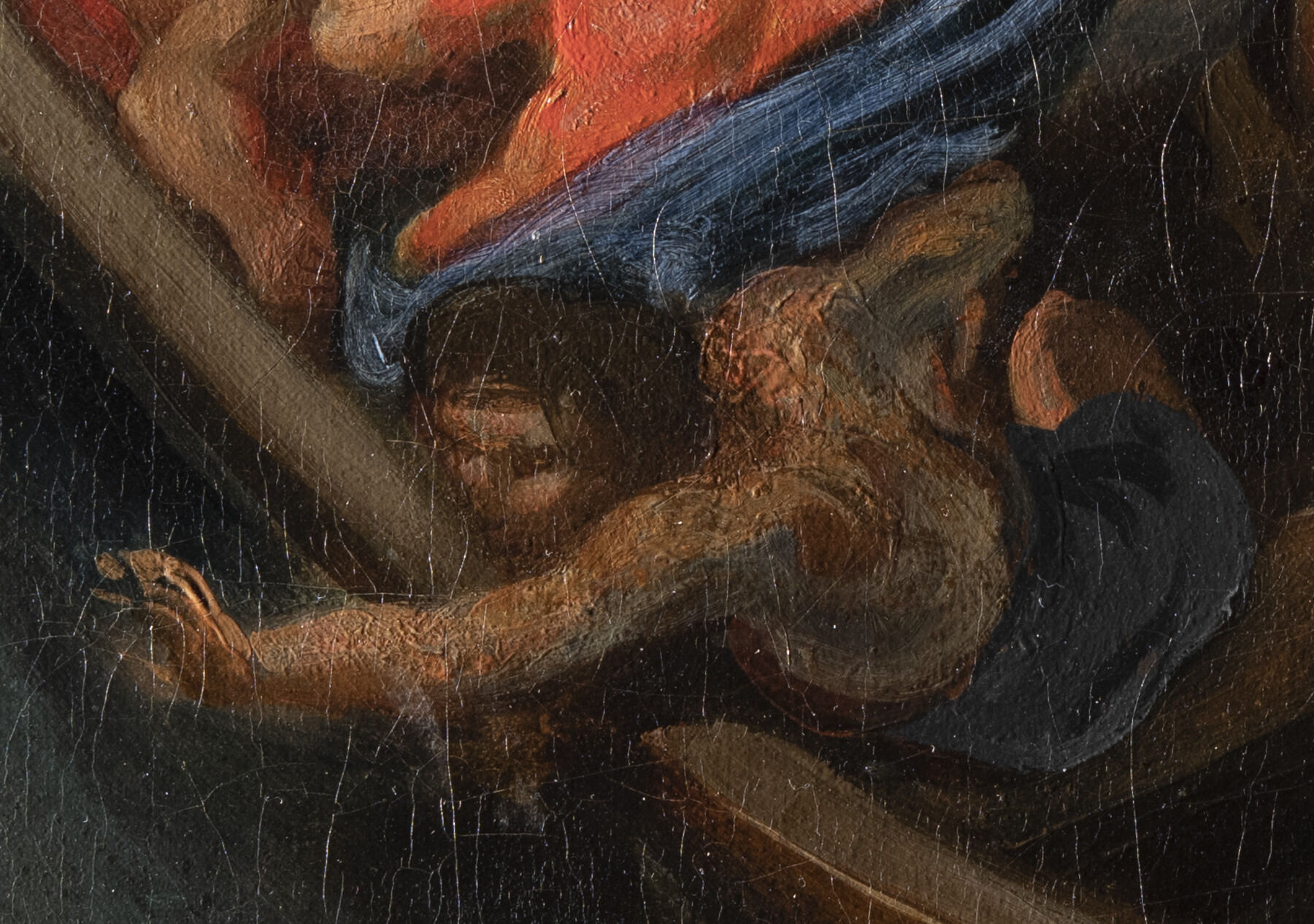 Fig. 7. Detail in raking illumination, Christ on the Sea of Galilee (1853 or earlier)
Fig. 7. Detail in raking illumination, Christ on the Sea of Galilee (1853 or earlier)
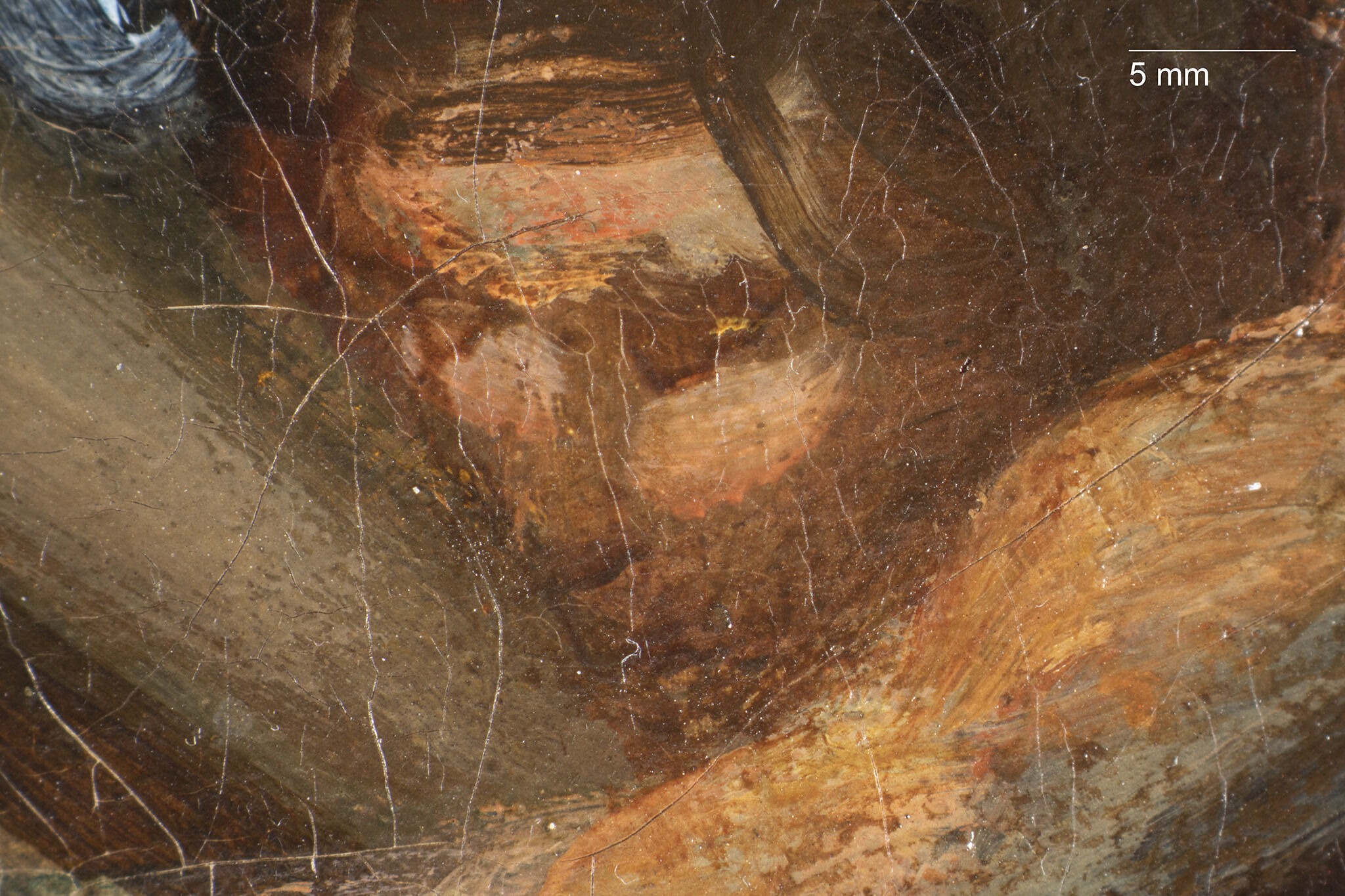 Fig. 8. Photomicrograph of a disciple’s face, Christ on the Sea of Galilee (1853 or earlier)
Fig. 8. Photomicrograph of a disciple’s face, Christ on the Sea of Galilee (1853 or earlier)
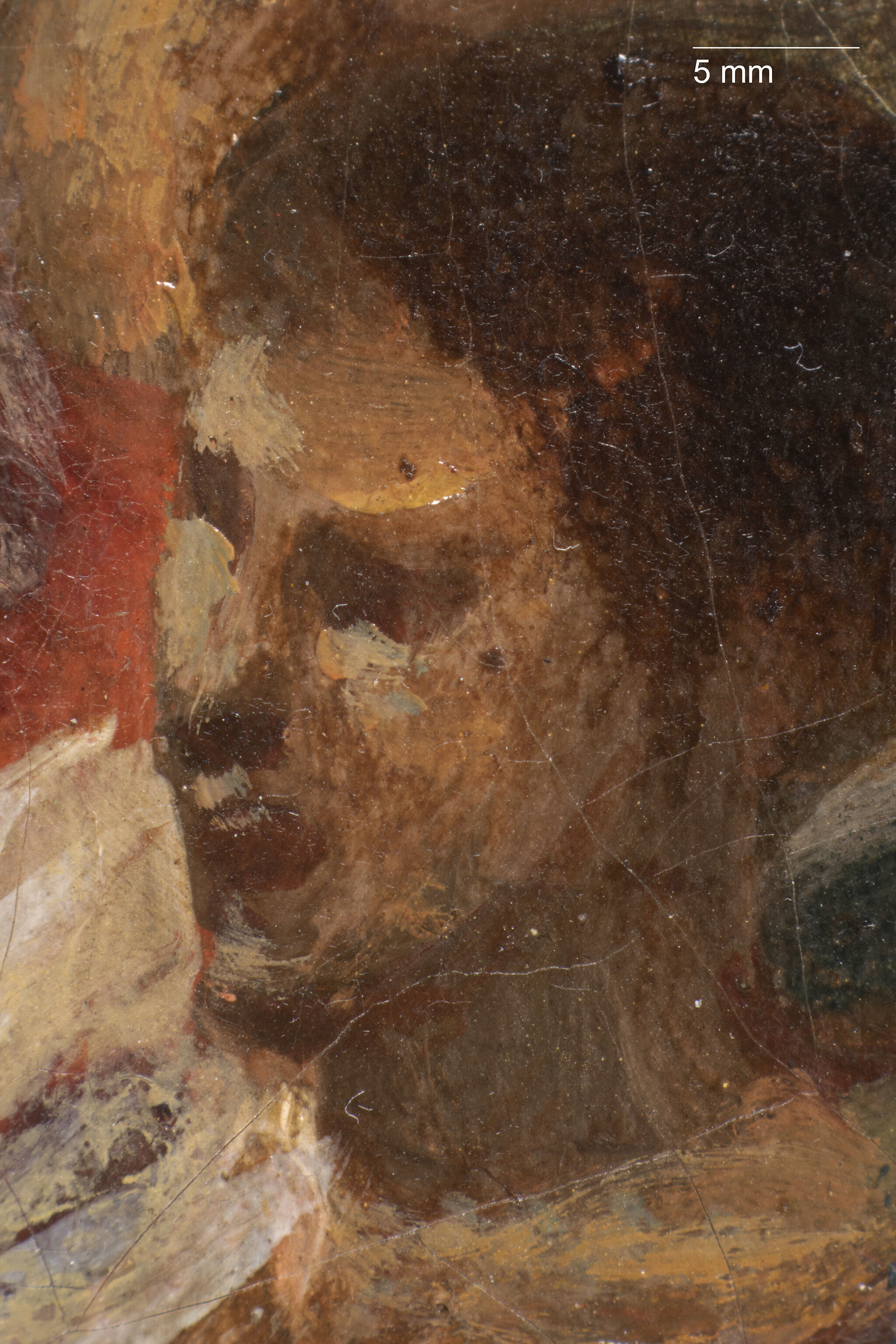 Fig. 9. Photomicrograph of another disciple’s face, Christ on the Sea of Galilee (1853 or earlier)
Fig. 9. Photomicrograph of another disciple’s face, Christ on the Sea of Galilee (1853 or earlier)
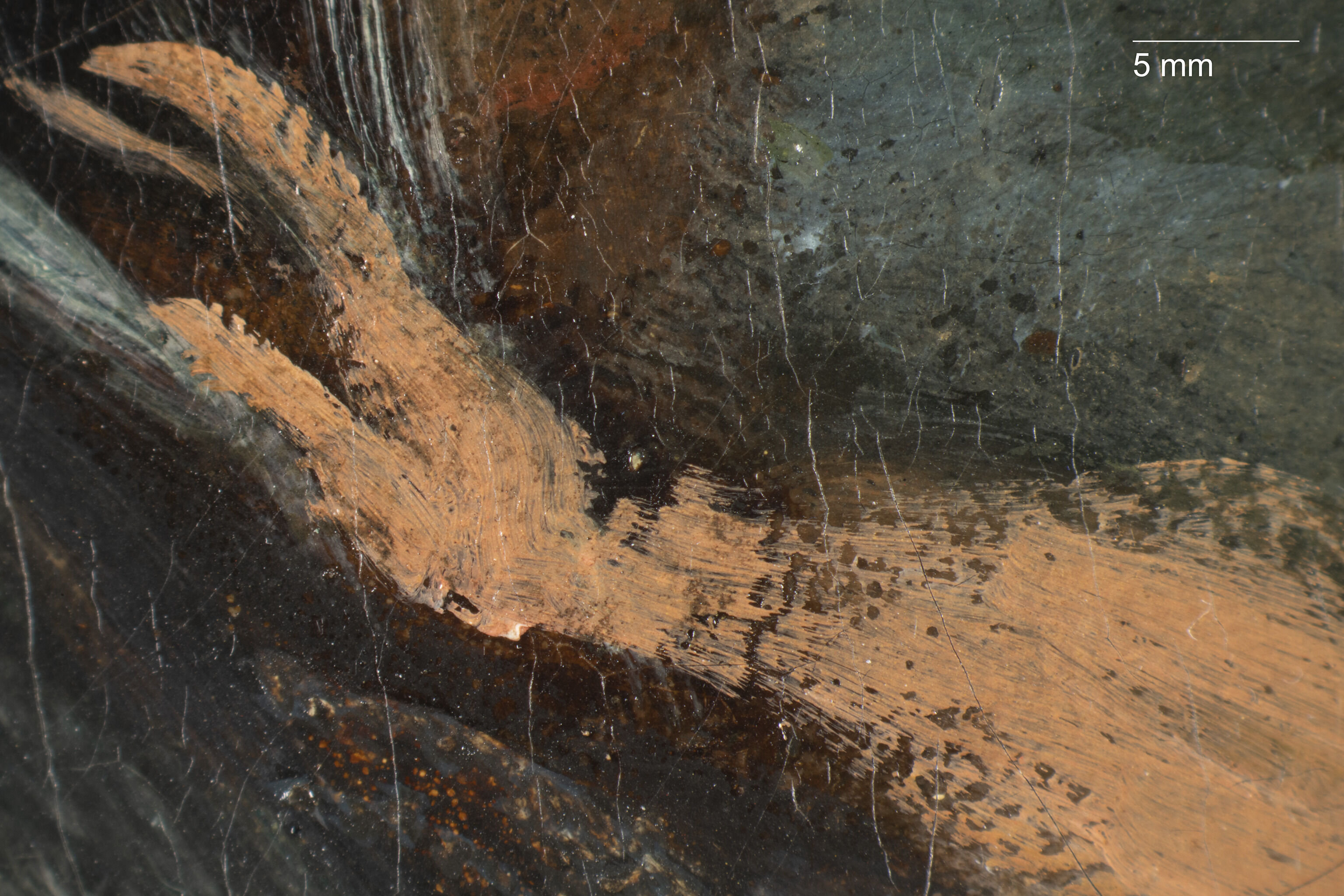 Fig. 10. Photomicrograph of the dry brushwork of the standing figure’s arm, Christ on the Sea of Galilee (1853 or earlier)
Fig. 10. Photomicrograph of the dry brushwork of the standing figure’s arm, Christ on the Sea of Galilee (1853 or earlier)
 Fig. 11. Photomicrograph of the lower right figure’s exposed back, Christ on the Sea of Galilee (1853 or earlier), revealing textures in the paint produced by the rapid up and down motion of the artist’s brush
Fig. 11. Photomicrograph of the lower right figure’s exposed back, Christ on the Sea of Galilee (1853 or earlier), revealing textures in the paint produced by the rapid up and down motion of the artist’s brush
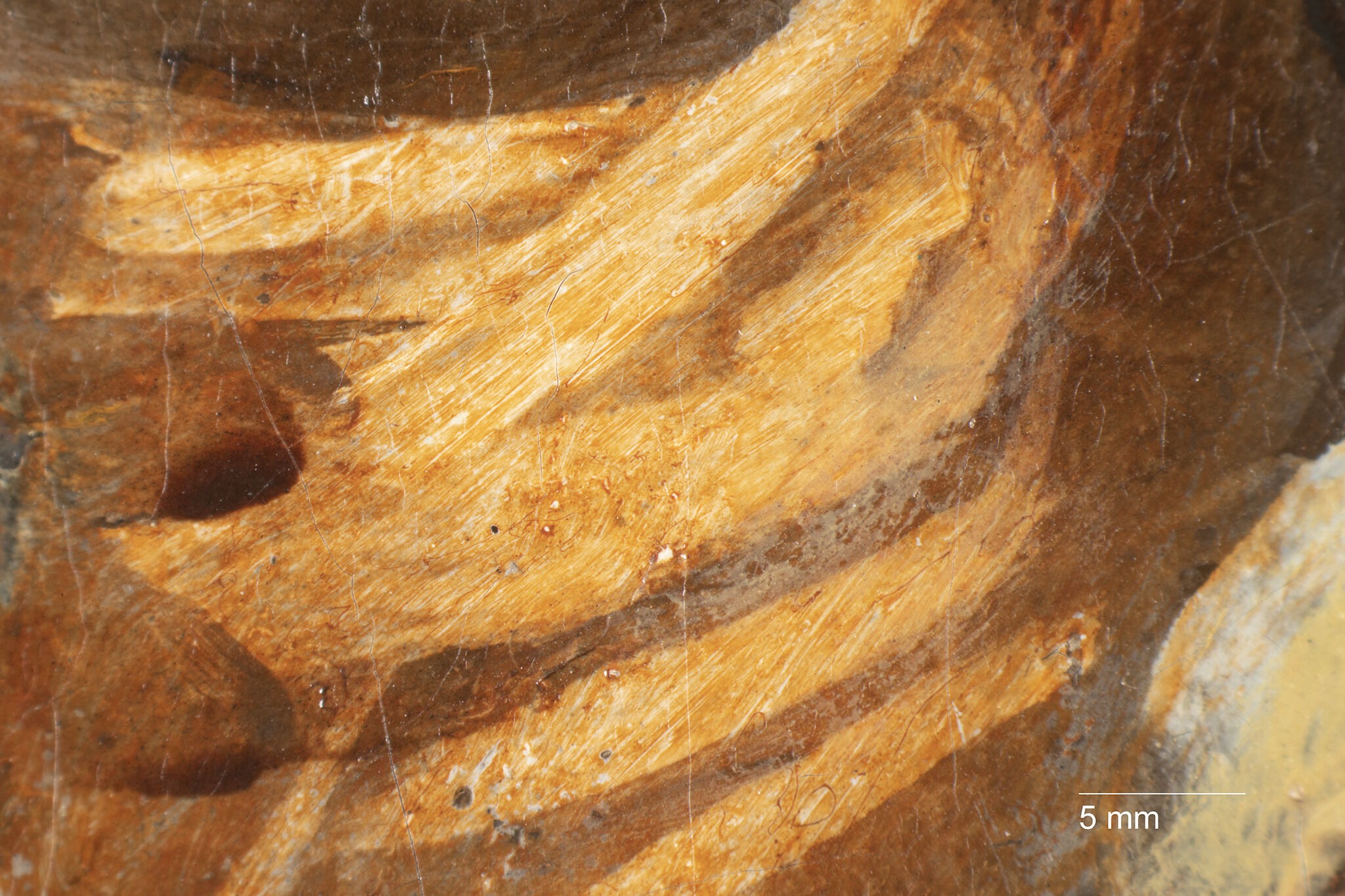 Fig. 12. Photomicrograph of the orange drapery, Christ on the Sea of Galilee (1853 or earlier)
Fig. 12. Photomicrograph of the orange drapery, Christ on the Sea of Galilee (1853 or earlier)
 Fig. 13. Photomicrograph of the blue drapery, Christ on the Sea of Galilee (1853 or earlier)
Fig. 13. Photomicrograph of the blue drapery, Christ on the Sea of Galilee (1853 or earlier)
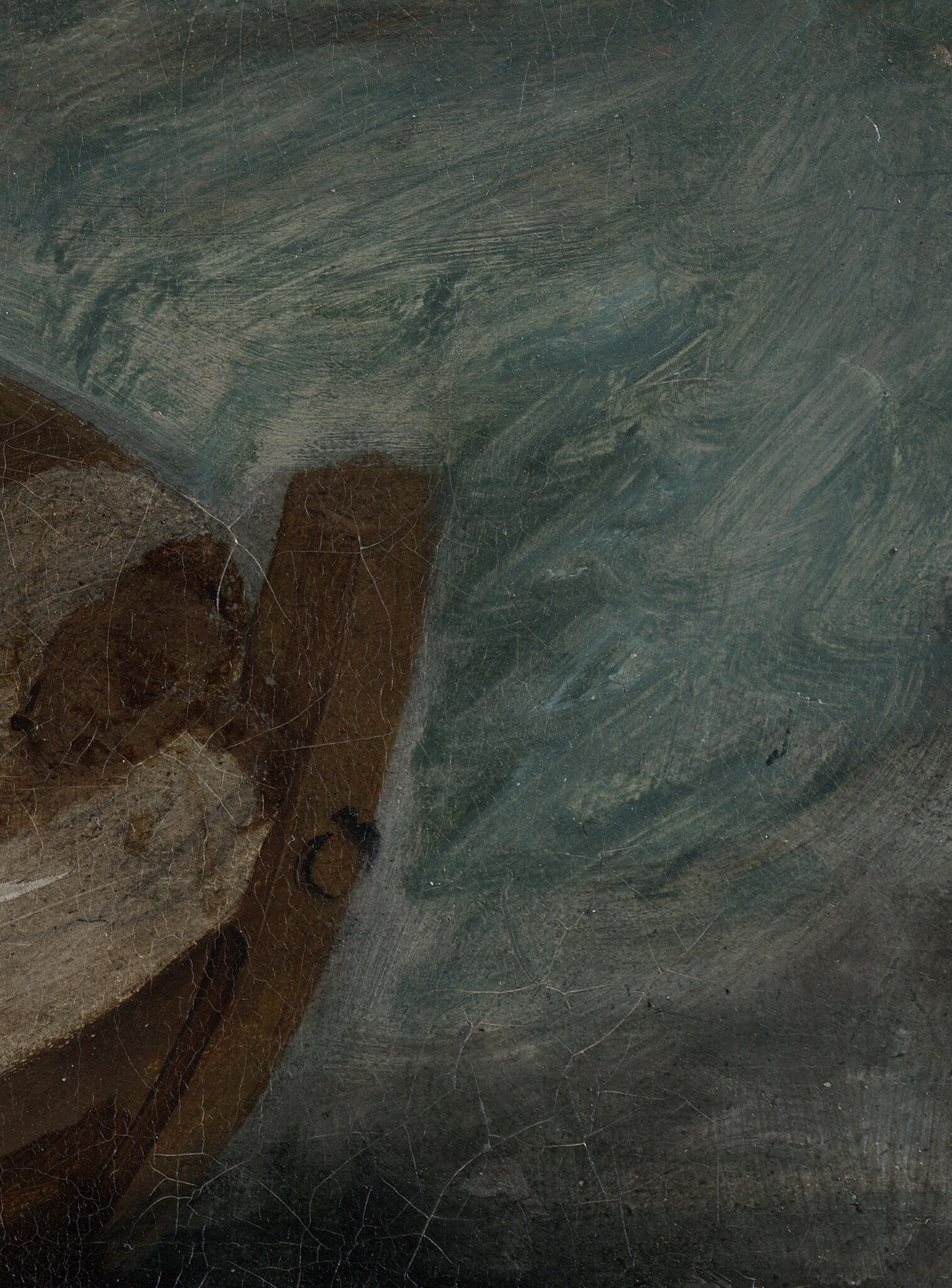 Fig. 14. Detail of the zigzagging brushwork of the water, Christ on the Sea of Galilee (1853 or earlier)
Fig. 14. Detail of the zigzagging brushwork of the water, Christ on the Sea of Galilee (1853 or earlier)
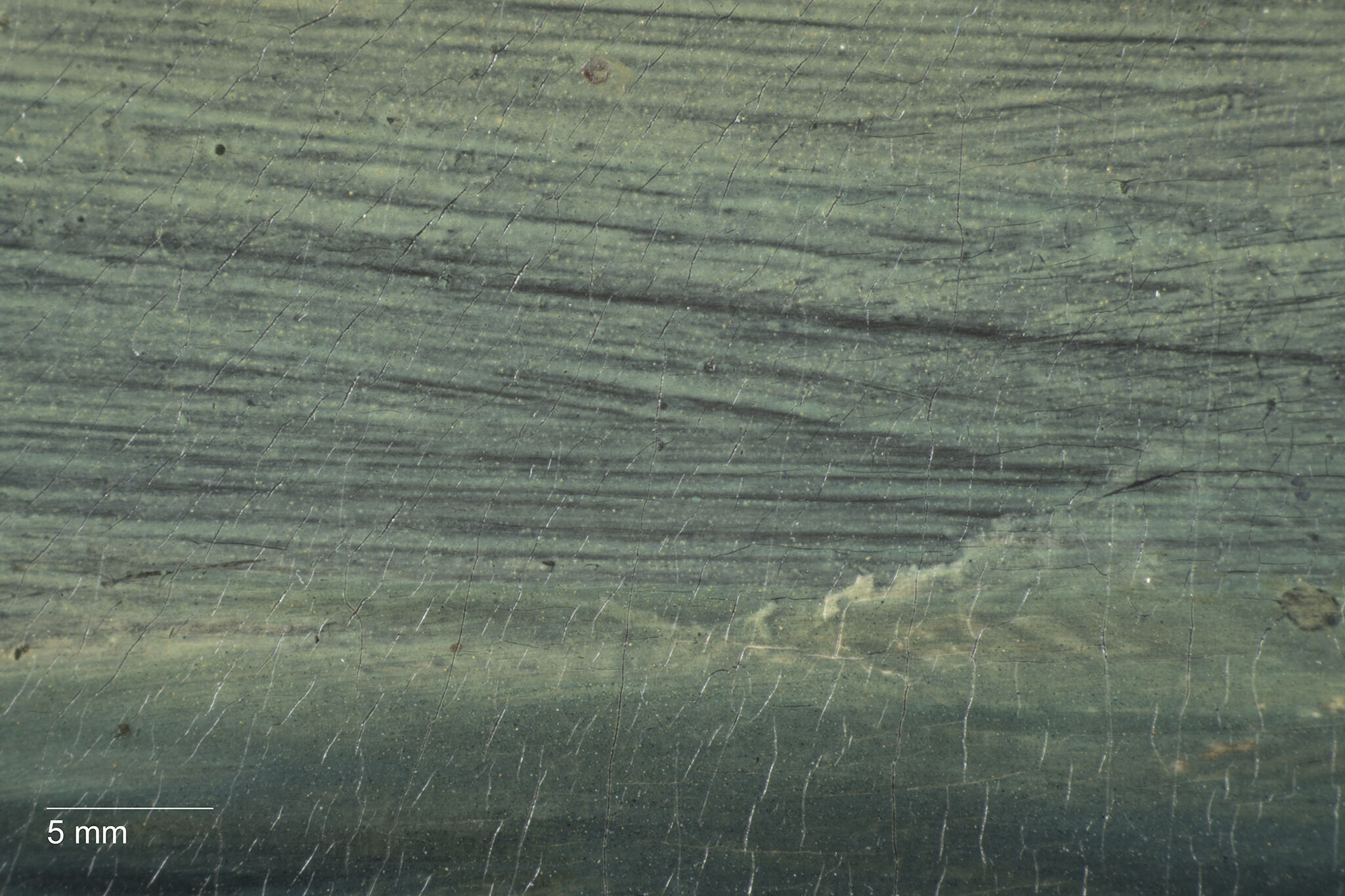 Fig. 15. Photomicrograph of the sky, Christ on the Sea of Galilee (1853 or earlier)
Fig. 15. Photomicrograph of the sky, Christ on the Sea of Galilee (1853 or earlier)
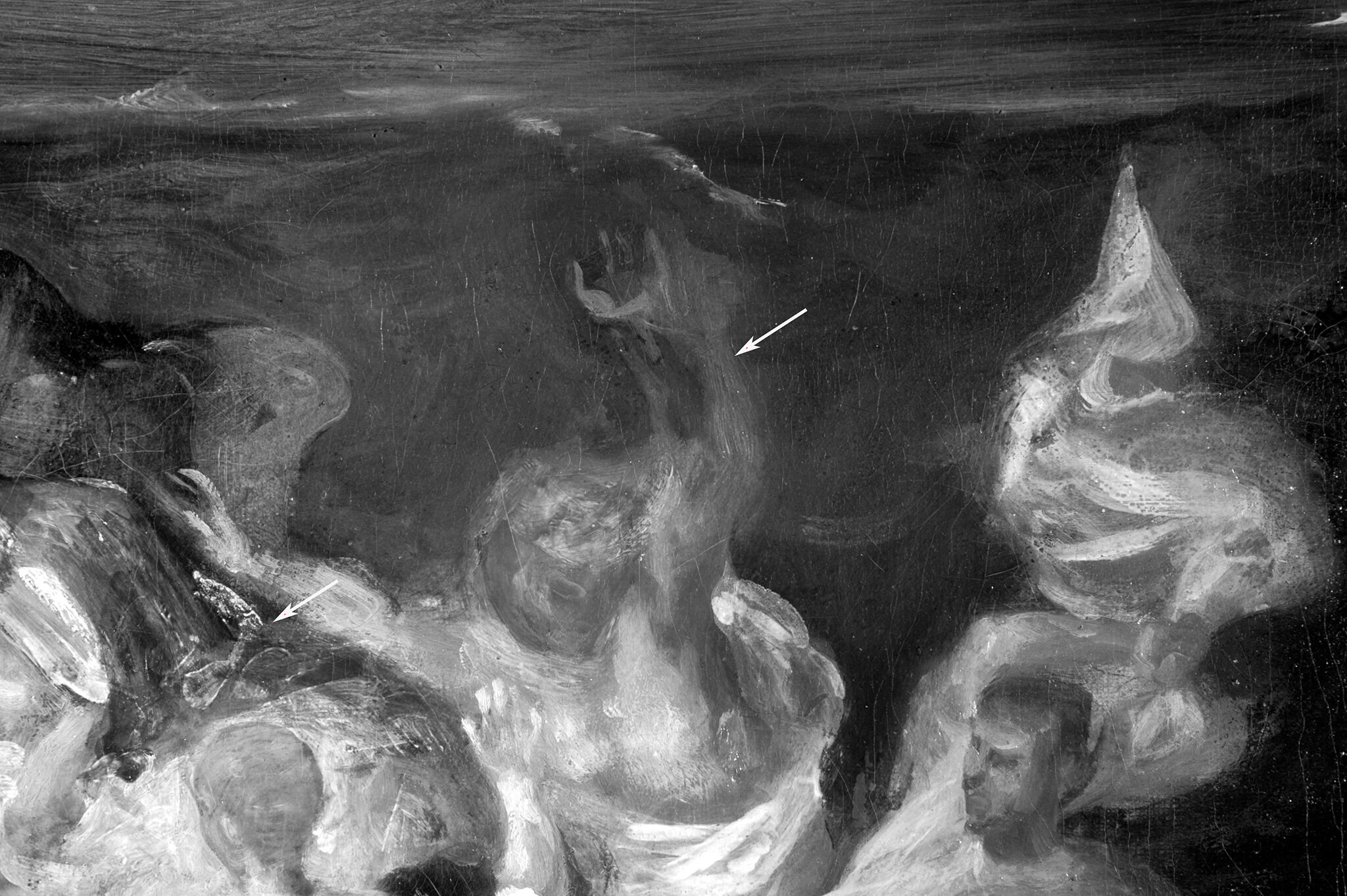 Fig. 16. Reflected infrared digital detail of Christ on the Sea of Galilee (1853 or earlier), revealing shifts in the position of the raised hand (central arrow) and the opposite arm (left arrow)
Fig. 16. Reflected infrared digital detail of Christ on the Sea of Galilee (1853 or earlier), revealing shifts in the position of the raised hand (central arrow) and the opposite arm (left arrow)
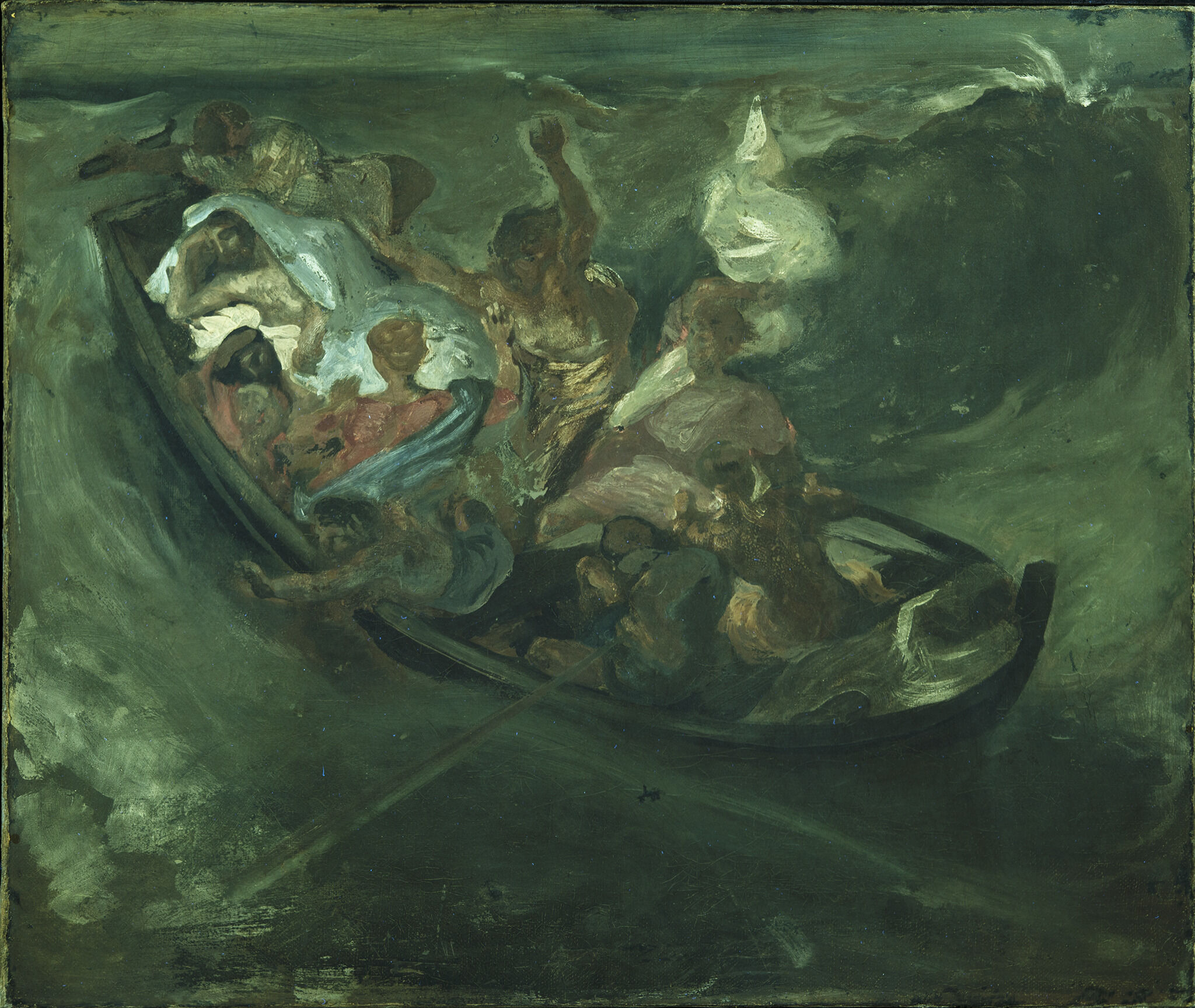 Fig. 17. Ultraviolet-induced visible fluorescence photograph, Christ on the Sea of Galilee (1853 or earlier)
Fig. 17. Ultraviolet-induced visible fluorescence photograph, Christ on the Sea of Galilee (1853 or earlier)
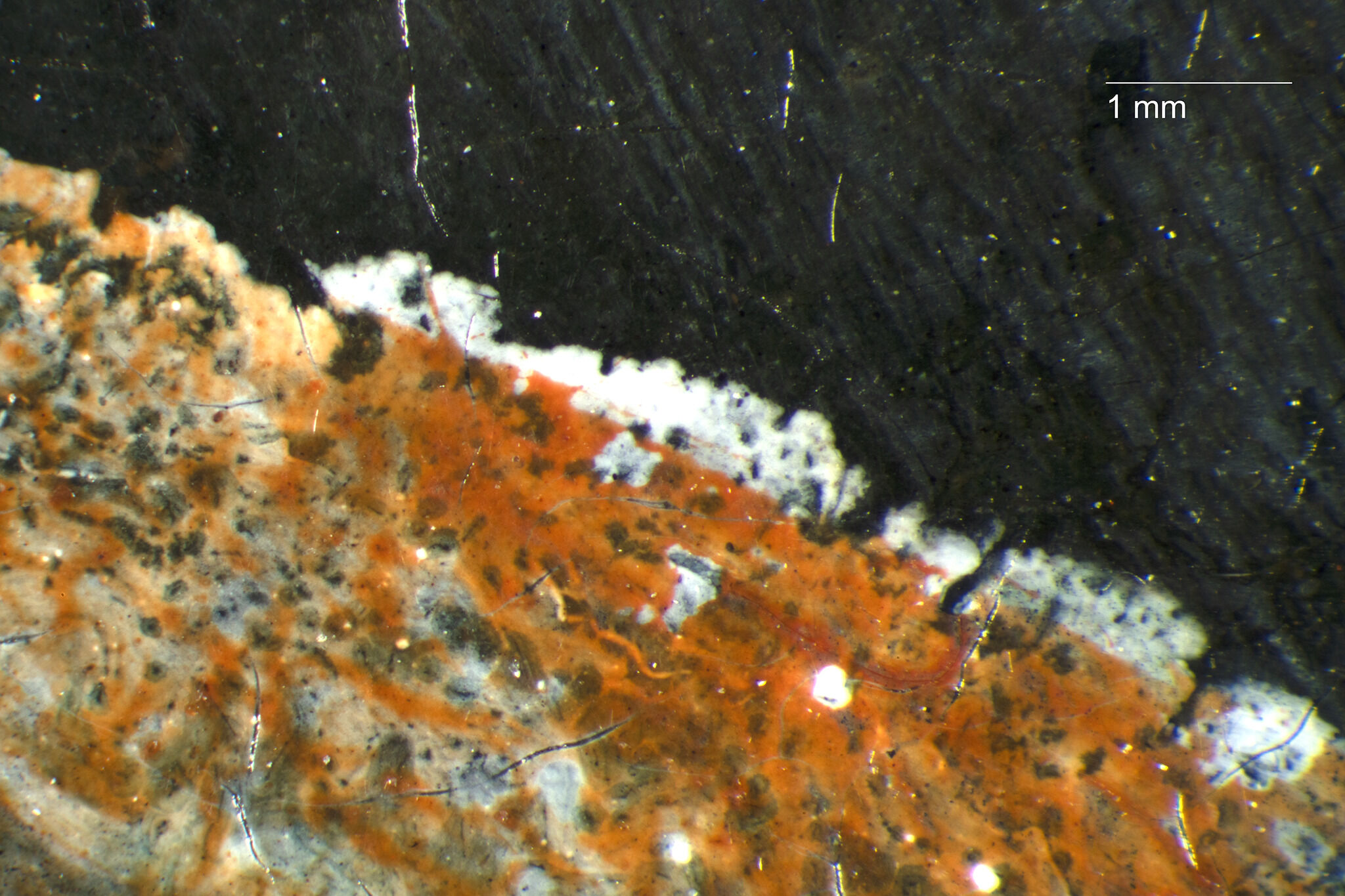 Fig. 18. Photomicrograph of the standing figure’s orange garment, Christ on the Sea of Galilee (1853 or earlier), showing a bright white stroke with reticulated edges and an overlying orange glaze
Fig. 18. Photomicrograph of the standing figure’s orange garment, Christ on the Sea of Galilee (1853 or earlier), showing a bright white stroke with reticulated edges and an overlying orange glaze
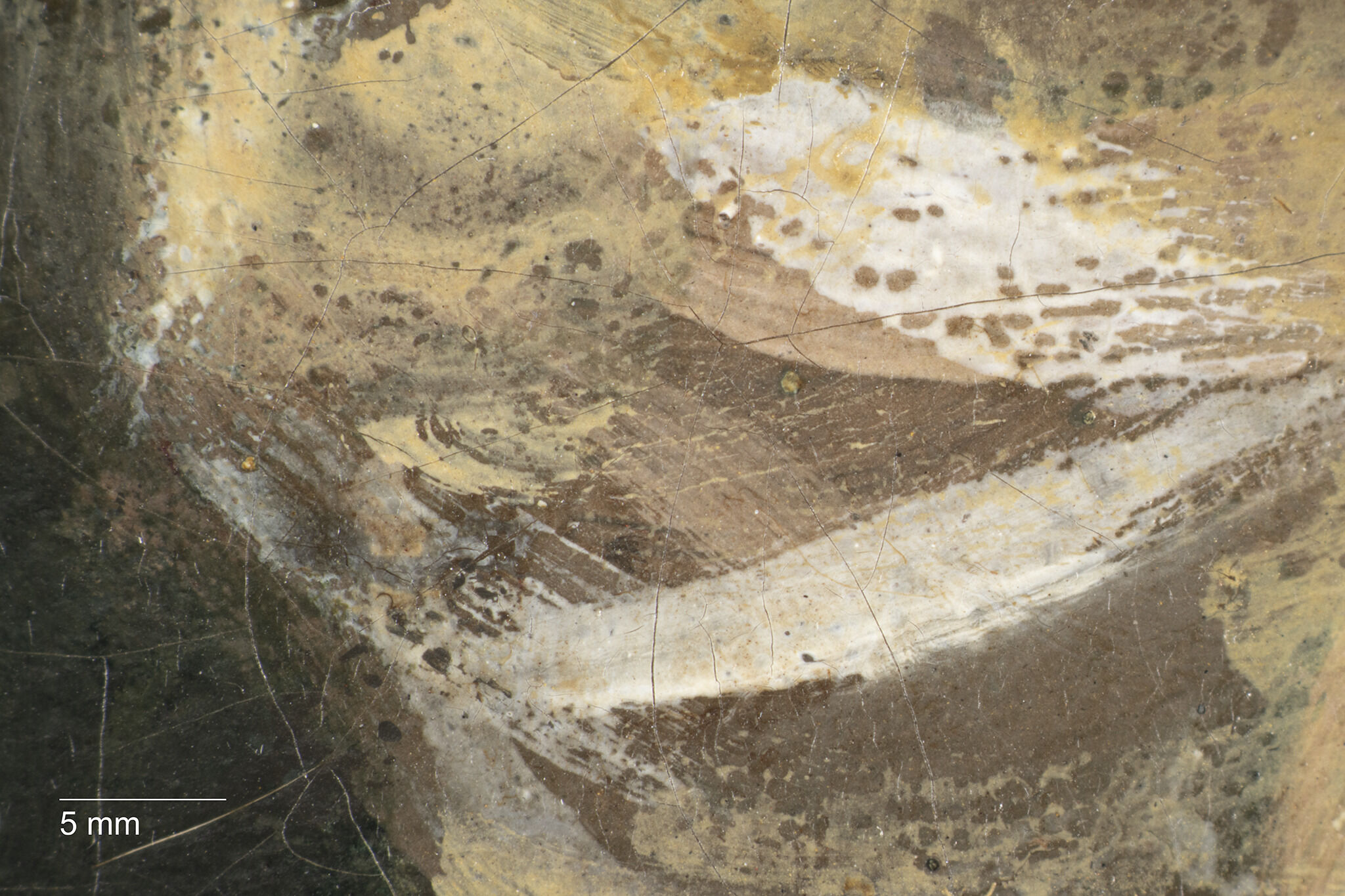 Fig. 19. Photomicrograph of the billowing fabric, Christ on the Sea of Galilee (1853 or earlier), showing several paint strokes with a reticulated appearance
Fig. 19. Photomicrograph of the billowing fabric, Christ on the Sea of Galilee (1853 or earlier), showing several paint strokes with a reticulated appearance
His paints were rich in oil medium (he always asked his colourman for extra oil when ordering them), he used cheap paints in his early works (remark by Piot), he employed unstable pigments, he used mixtures of pigments (on average of three to five in one color), he painted on top of the varnish, he used wax on his palette, and he endlessly retouched and overpainted his own work as part of the painting process. As a result, colors lost their luster and gradually darkened in tone. Frequent use of distemper as underpaint for oil increased darkening (sinking) of color.10Ewa Smithwick, “Frédèric Villot and Eugène Delacroix: A 19th-Century Cleaning Controversy,” Journal of the International Institute for Conservation—Canadian Group 13 (1988), 30. Smithwick compiles information about Delacroix’s materials and technique from a number of sources. His request for paints with extra oil is found in a letter from Delacroix to M. Haro, October 29, 1827, in Eugène Delacroix, Selected Letters, 1813–1863, trans. and ed. Jean Stewart (New York: St. Martin’s Press, 1971), 141. The low-quality paint employed by Delacroix in his early works was described by Piot, Les Palettes de Delacroix, 74. The artist describes applying paint on top of varnish in his journal entry, February 7, 1849, in Eugène Delacroix, Journal, 1822–1863, 175. Delacroix’s use of wax is discussed in a letter to Paul Huet, October 13, 1858, in Delacroix, Selected Letters, 347–48. For his retouching and overpainting, see Delacroix to Frédèric Villot, October 1834, in Delacroix, Selected Letters, 207. His use of distemper is described in Piot, Les Palettes de Delacroix, 58–61.
To date, no analysis has been undertaken to determine whether distemper, wax-oil mixtures, or intermediate varnish layers are present among the materials of the Nelson-Atkins painting.
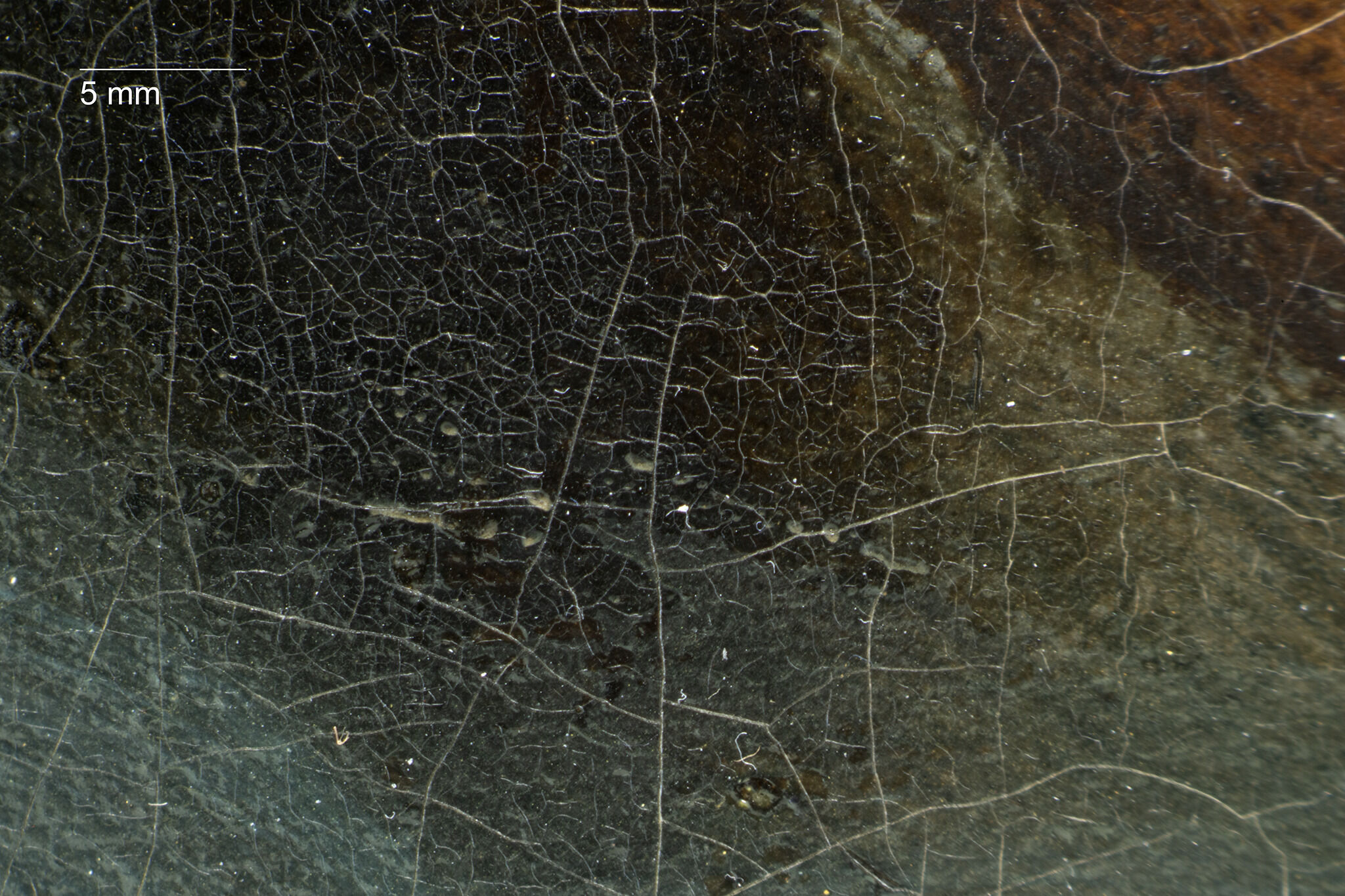 Fig. 20. Photomicrograph of the reticulated paint depicting a spray of water near the edge of the boat, Christ on the Sea of Galilee (1853 or earlier)
Fig. 20. Photomicrograph of the reticulated paint depicting a spray of water near the edge of the boat, Christ on the Sea of Galilee (1853 or earlier)
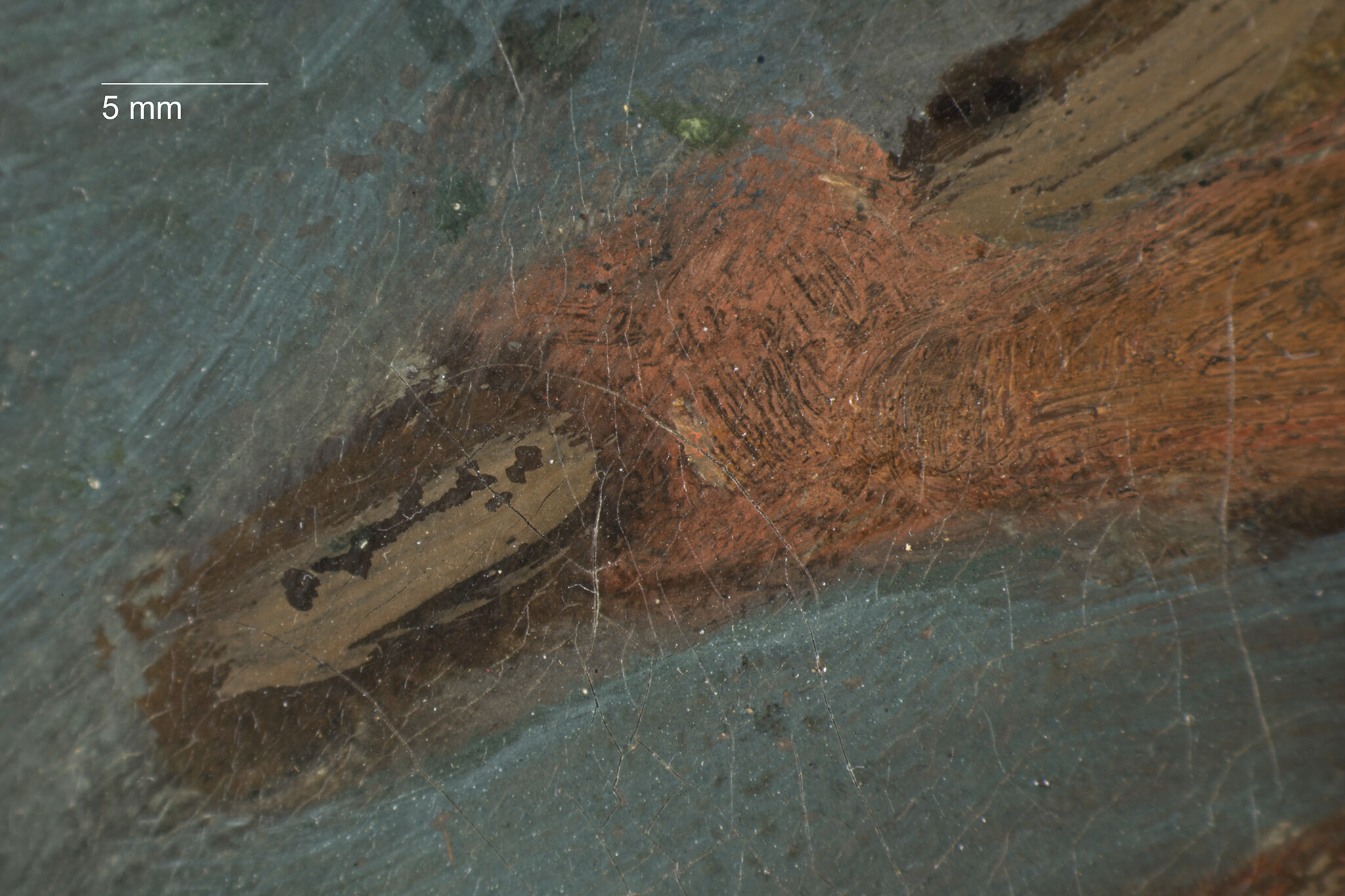 Fig. 21. Photomicrograph of paint loss on the boat’s tiller, Christ on the Sea of Galilee (1853 or earlier)
Fig. 21. Photomicrograph of paint loss on the boat’s tiller, Christ on the Sea of Galilee (1853 or earlier)
Of greater concern is the possibility that thin, fluid glazes may have been removed from the lower left corner during a past cleaning; fragmented paint edges, disruptions to the strong horizontal strokes at the bottom edge, and an absence of yellow-brown washes are evident in this area (Figs. 22, 23).12In addition to overcleaning, some of the disruption to the horizontal strokes along the bottom edge relates to paint loss that occurred among the upper paint layers. Delacroix’s thin layers were undoubtedly susceptible to past solvent cleaning, as a small amount of paint abrasion has occurred in the orange glaze of the standing figure’s garment and the green wash of water on the right (Figs. 12, 13). A photograph of the painting, captured following treatment in 1983 and reproduced in Johnson’s catalogue raisonné, shows a fairly even tonality on the lower left corner, but the high contrast of this image is misleading.13Johnson, The Paintings of Eugène Delacroix, 235, catalogue number 451, plate 262. “This picture was cleaned following the Sotheby’s sale in 1983 and is here reproduced by a photograph taken after the cleaning.” The condition of the lower left corner in relation to a central figure, who focuses intently out across the water with an outstretched hand, raises the important question of whether the Nelson-Atkins painting may have once contained a drifting oar, like those featured in the later variants. Although there is a small touch of transparent brown paint in this area (Fig. 23), there is no clear indication that this was in fact the case.
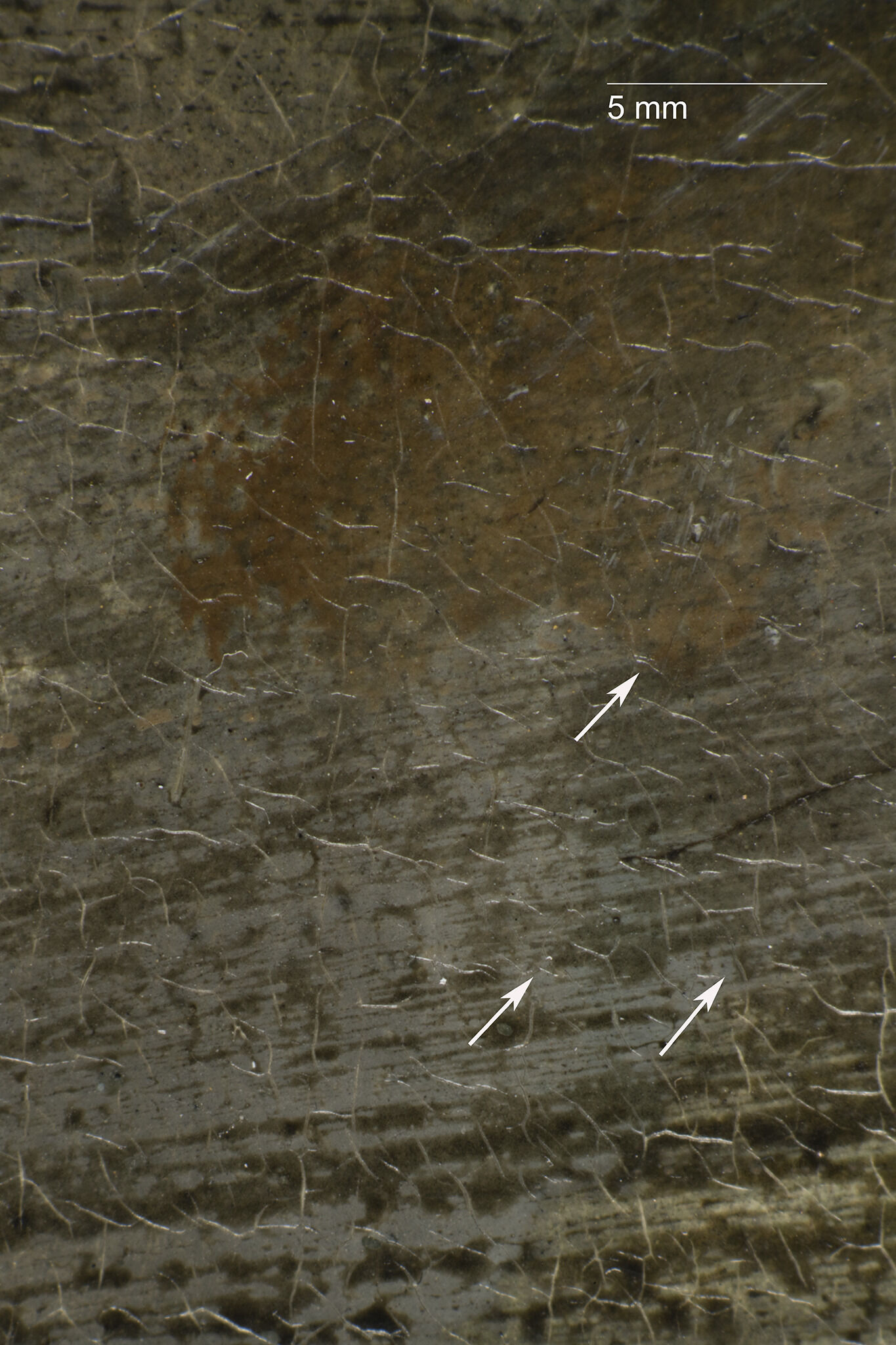 Fig. 22. Photomicrograph of the left edge of the left oar, Christ on the Sea of Galilee (1853 or earlier). Fragmented paint edges and disruptions to the horizontal brushwork are marked with arrows.
Fig. 22. Photomicrograph of the left edge of the left oar, Christ on the Sea of Galilee (1853 or earlier). Fragmented paint edges and disruptions to the horizontal brushwork are marked with arrows.
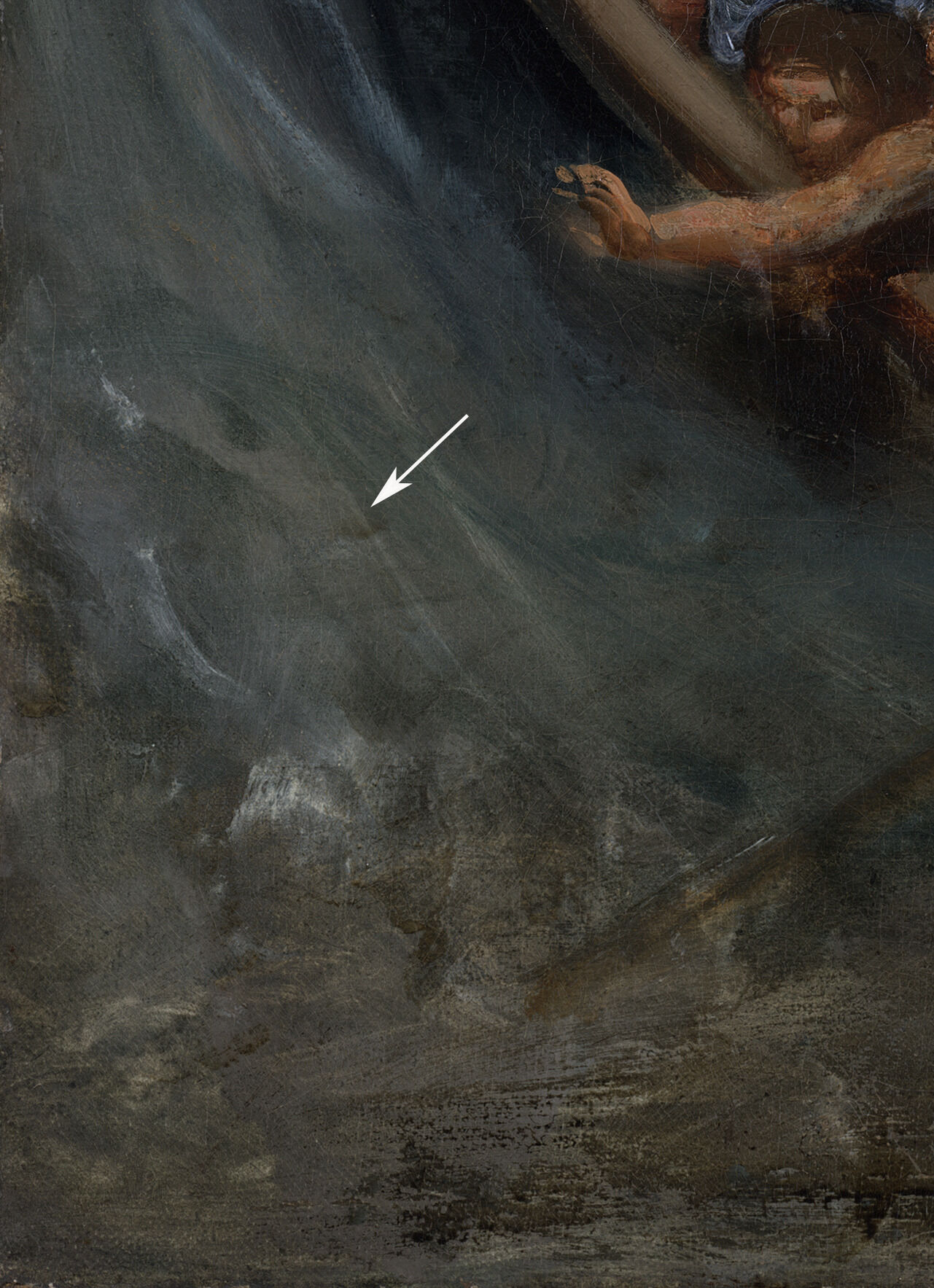 Fig. 23. Detail of the lower left water, Christ on the Sea of Galilee (1853 or earlier). A small spot of transparent brown is marked with an arrow.
Fig. 23. Detail of the lower left water, Christ on the Sea of Galilee (1853 or earlier). A small spot of transparent brown is marked with an arrow.
Notes
-
The dimensions of the stretcher do not coincide with the standard-format canvases listed in Jacques-Nicolas Paillot de Montabert, Traité complet de la peinture (Paris: Bossange Père, 1829), 9:147.
-
Stéphanie Constantin, “The Barbizon Painters: A Guide to Their Suppliers,” Studies in Conservation 46, no. 1 (2001): 49, 55.
-
The painting was examined using a Hamamatsu vidicon camera with a wavelength response up to 2200 nanometers. A more complete view of the underdrawing may be possible using an infrared camera with enhanced capabilities (i.e., improved sensitivity, an expanded portion of the infrared spectrum, higher resolution, etc.).
-
Eugène Delacroix, The Journal of Eugène Delacroix, trans. Walter Pach (New York: Covici-Friede, 1937), 153.
-
Louis de Planet, Souvenirs de Louis de Planet, ed. André Joubin, vol. 2, Société de l’histoire de l’art francais (Paris: Armand Colin, 1928), quoted in René Piot, Les Palettes de Delacroix (Paris: Librairie de France, 1931), 65. Translation provided by the author.
-
See the accompanying catalogue essay by Asher Ethan Miller.
-
A bright yellow fluorescence that partially follows compositional elements was observed on The Lion and the Snake (1847/1853; King’s College, Cambridge). Adele Wright, “‘Method cannot govern everything.’ Delacroix: mid-century modern master,” in A Changing Picture: Nineteenth-Century Painting Practice and Conservation, ed. Nicola Costaras, Kate Lowry, Helen Glanville, Pippa Balch, Victoria Sutcliffe, and Polly Saltmarsh (London: Archetype, 2019), 98.
-
Louis de Planet, Souvenirs de travaux de peinture avec M. Eugène Delacroix, ed. André Joubin (Paris: Armand Colin, 1929), 21–23, cited in Michael Swicklik, “French Painting and the Use of Varnish, 1750–1900,” Studies in the History of Art 41 (Washington, DC: National Gallery of Art, 1993): 161n18.
-
“While I have been working on my picture, The Woman of Algiers, I have discovered how pleasant, how necessary even it is to paint on top of the varnish. The only thing needed is to find some means of preventing the varnish underneath from being attacked when the top coat of varnish is removed at some later date.” See journal entry, 7 February 1849 in Eugène Delacroix, Journal, 1822–1863, ed. André Joubin (Paris: Librairie Plon, 1981), 175. Translated by Michael Swicklik. For an overview of Delacroix’s use of varnish, see Swicklik, “French Painting and the Use of Varnish, 1750–1900,” 162.
-
Ewa Smithwick, “Frédèric Villot and Eugène Delacroix: A 19th-Century Cleaning Controversy,” Journal of the International Institute for Conservation—Canadian Group 13 (1988), 30. Smithwick compiles information about Delacroix’s materials and technique from a number of sources. His request for paints with extra oil is found in a letter from Delacroix to M. Haro, October 29, 1827, in Eugène Delacroix, Selected Letters, 1813–1863, trans. and ed. Jean Stewart (New York: St. Martin’s Press, 1971), 141. The low-quality paint employed by Delacroix in his early works was described by Piot, Les Palettes de Delacroix, 74. The artist describes applying paint on top of varnish in his journal entry, February 7, 1849, in Eugène Delacroix, Journal, 1822–1863, 175. Delacroix’s use of wax is discussed in a letter to Paul Huet, October 13, 1858, in Delacroix, Selected Letters, 347–48. For his retouching and overpainting, see Delacroix to Frédèric Villot, October 1834, in Delacroix, Selected Letters, 207. His use of distemper is described in Piot, Les Palettes de Delacroix, 58–61.
-
Lee Johnson, The Paintings of Eugène Delacroix: A Critical Catalogue 1832–1863 (New York: Oxford University Press, 1986), 3:235.
-
In addition to overcleaning, some of the disruption to the horizontal strokes along the bottom edge relates to paint loss that occurred among the upper paint layers.
-
Johnson, The Paintings of Eugène Delacroix, 235, catalogue number 451, plate 262. “This picture was cleaned following the Sotheby’s sale in 1983 and is here reproduced by a photograph taken after the cleaning.”
Documentation
Citation
Chicago:
Glynnis Napier Stevenson, “Eugène Delacroix, Christ on the Sea of Galilee, 1853 or earlier,” documentation in ed. Aimee Marcereau DeGalan French Paintings and Pastels, 1600–1945: The Collections of the Nelson-Atkins Museum of Art (Kansas City: The Nelson-Atkins Museum of Art, 2021), https://doi.org/10.37764/78973.5.402.4033.
MLA:
Stevenson, Glynnis Napier. “Eugène Delacroix, Christ on the Sea of Galilee, 1853 or earlier,” documentation. French Paintings and Pastels, 1600–1945: The Collections of the Nelson-Atkins Museum of Art, edited by Aimee Marcereau DeGalan, The Nelson-Atkins Museum of Art, 2021. doi: 10.37764/78973.5.402.4033
Provenance
Citation
Chicago:
Glynnis Napier Stevenson, “Eugène Delacroix, Christ on the Sea of Galilee, 1853 or earlier,” documentation in ed. Aimee Marcereau DeGalan French Paintings and Pastels, 1600–1945: The Collections of the Nelson-Atkins Museum of Art (Kansas City: The Nelson-Atkins Museum of Art, 2021), https://doi.org/10.37764/78973.5.402.4033.
MLA:
Stevenson, Glynnis Napier. “Eugène Delacroix, Christ on the Sea of Galilee, 1853 or earlier,” documentation. French Paintings and Pastels, 1600–1945: The Collections of the Nelson-Atkins Museum of Art, edited by Aimee Marcereau DeGalan, The Nelson-Atkins Museum of Art, 2021. doi: 10.37764/78973.5.402.4033.
With the artist, ca. 1853–August 13, 1863 [1];
Purchased from Delacroix’s posthumous sale, Vente qui aura lieu par suite du décès de Eugène Delacroix, Hôtel Drouot, Paris, February 17–19, 1864, lot 131, as Jésus endormi dans la barque pendant la tempête, by Tilly et Ott, Paris, 1864 [2];
Purchased from “a friend” by Charles Soultzener d’Enschwyl (1818–83), Lésigny and Paris, France, by March 18, 1873–83 [3];
Inherited by his wife Frasquita-Joséphine-Madeleine Soultzener d’Enschwyl (née Thomas de Colmar, 1821–1905), Lésigny and Paris, France, by November 17, 1883–at least 1885;
Probably by descent to their daughter, Marie-Frasquita Véneau (née Soultzener d’Enschwyl, 1845–1908), Paris, by October 20, 1905;
To her husband, Marc-Charles-Guy-Ludovic Véneau (1841–1931), Paris, by November 9, 1908–09;
Purchased from Véneau by Durand-Ruel, Paris, stock no. L: 9095, in half-shares with Bernheim-Jeune [fils?], Paris, stock no. 17872, as Le Christ sur le Lac de Génézareth, June 16–December 30, 1909 [4];
Purchased from Bernheim-Jeune fils, Paris, by Bernheim-Jeune, December 30, 1909–10 [5];
Purchased from Bernheim-Jeune, Paris, by Baron Denys Cochin (1851–1922), Paris, January 4, 1910 [6];
With Bernheim-Jeune, Paris, by September 30, 1913 [7];
Purchased from Bernheim-Jeune by Georg Reinhart (1877–1955), Winterthur, Switzerland, September 30, 1913–55;
By descent to his daughter, Verena Lilly Hafter-Reinhart (1905–73), Zürich, Switzerland, by July 27, 1955;
Possibly to her husband Ernst Hafter (1909–98), Zürich, by October 21, 1973;
Purchased from Nineteenth Century European Paintings, Drawings and Sculpture, Sotheby Parke Bernet and Co., London, November 22, 1983, lot 9, by Wheelock Whitney and Co., New York, 1983–85 [8];
Purchased at Nineteenth Century European Paintings, Drawings and Watercolours, Sotheby’s, London, November 26, 1985, lot 9, by a private collector, 1985;
Purchased at Nineteenth Century European Paintings, Drawings, Watercolors and Sculpture, Christie’s, New York, October 26, 1988, lot 103, by Richard L. Feigen and Co., New York, 1988–August 4, 1989 [9];
Purchased from Richard L. Feigen by The Nelson-Atkins Museum of Art, Kansas City, MO, 1989.
Notes
[1] See emails between Dr. Michèle Hannoosh, University of Michigan-Ann Arbor, and Glynnis Napier Stevenson, NAMA, dating between April 8 and July 28, 2020, NAMA curatorial files, regarding the change of the painting’s date from 1841 to ca. 1853.
[2] Delacroix made clear in his will “that there be a public auction of everything that will have belonged to me, apart from the things that I have bequeathed. And I impose on my universal legatee the absolute obligation of holding this auction in the two years following my death.” See email from Dr. Michèle Hannoosh, University of Michigan-Ann Arbor, to Glynnis Napier Stevenson, NAMA, July 30, 2020. See the transcription of Delacroix’s inventory, held in the Minutier central, Archives nationales, Paris, in Henriette Bessis, “L’inventaire apres deces d’Eugene Delacroix. Études et documents,” Bulletin de la Société de l’histoire de l’art français (1969).
The annotated Delacroix sales catalogue belonging to Adolphe Moreau calls the buyer, “Filhs.” Alfred Robaut in his 1885 catalogue raisonné names the buyer, “Filhston.” “Filhs’” name appears repeatedly in the catalogue of Delacroix’s posthumous 1864 sale; many of the works he purchased reappeared on the art market in the years immediately following the sale. According to Dr. Michèle Hannoosh, “The problem is that neither of these names exists: they are a misreading. According to the auctioneer’s record of the sale, the buyer of lot 131 was ‘Tilly et Ott,’ at ‘‘10 P[assa]ge Violet,’ which the other lots shorten to ‘Tilly.’ Tilly et Ott was a firm of ‘négociants-commissionnaires’ that seems to have dealt in silks. See email from Dr. Michèle Hannoosh, University of Michigan-Ann Arbor, to Glynnis Napier Stevenson, NAMA, July 28, 2020, NAMA curatorial files.
[3] The earliest mention of this painting being in M. Soultzener’s collection is in Adolphe Moreau, E. Delacroix et son œuvre (Paris: Librairie des Bibliophiles, 1873). According to Dr. Michèle Hannoosh, “In a letter to Moreau dated 18 March 1873, Soultzener writes that his picture was ‘the first sketch of the various Barques that [Delacroix] subsequently modified,’ that he had acquired it from ‘one of his friends’ and that he believed it had been part of Delacroix’s posthumous sale.” Louvre autographs A849 AR25 L53, transcribed and translated by Dr. Hannoosh. See email from Dr. Hannoosh, University of Michigan-Ann Arbor, to Glynnis Napier Stevenson, NAMA, July 28, 2020, NAMA curatorial files.
[4] See email from Paul-Louis Durand-Ruel and Flavie Durand-Ruel, Durand-Ruel et Cie., to Nicole Myers, NAMA, January 11, 2016, NAMA curatorial files. Durand-Ruel photo no. 6438; see also photo stock card, Eugene Delacroix [sic], Durand-Ruel NY, Photo Archives, National Gallery of Art, Washington, DC Durand-Ruel did not cite Bernheim-Jeune fils, but see footnote 5. Durand-Ruel retained their half-share from June 16, 1909 until January 16, 1914, when they settled their account with Bernheim-Jeune.
[5] According to Guy-Patrice Dauberville, Director, Bernheim-Jeune et Cie, Paris, “cette œuvre figure dans nos livres de stock comme ayant été acheté à Bernheim-Jeune fils le 30 décembre 1909 et vendue le 4 janvier 1910 à Denis Cochin”; see letters from Guy-Patrice Dauberville to NAMA, September 1, 2011 and January 3, 2012, NAMA curatorial files. Bernheim-Jeune Fils was a separate company formed by Gaston and Josse Bernheim-Jeune.
[6] Ibid.
[7] Georg Reinhart, Katalog meiner Sammlung (Winterthur, Switzerland, 1922), 16, states that Reinhart bought it from Bernheim-Jeune on September 30, 1913. A letter from Reinhart to the dealer Carl Montag held at the Schweizerischen Instituts für Kunstwissenschaft (SIKDok), Zürich, dated September 30, 1913, cites the purchase of the Delacroix. Cited in Dieter Schwarz, ed., Die Sammlung Georg Reinhart, exh. cat. (Winterthur: Kunstmuseum Winterthur, 1998), 12–13, 255.
However, Bernheim-Jeune does not record the painting in its collection after 1910. See letter from Guy-Patrice Dauberville, Director, Bernheim-Jeune et Cie, Paris, to NAMA, January 3, 2012, NAMA curatorial files. Lastly, Durand-Ruel sold its half share to Bernheim-Jeune on January 16, 1914. See email from Paul-Louis Durand-Ruel and Flavie Durand-Ruel, Durand-Ruel et Cie. to Nicole Myers, NAMA, January 11, 2016, NAMA curatorial files.
[8] See email from Asher Ethan Miller, Associate Curator, The Metropolitan Museum of Art, New York, to Aimee Marcereau DeGalan and Meghan Gray, NAMA, January 6, 2019, NAMA curatorial files. See also 19th Century European Paintings, Drawings, Watercolors and Sculpture (New York: Christie’s, October 26, 1988), 112–13.
[9] Feigen purchase date confirmed by email from Emelia Scheidt, Gallery Associate, Richard L. Feigen and Co., New York, to Meghan Gray, NAMA, on April 13, 2015, NAMA curatorial files.
Related Works
Citation
Chicago:
Glynnis Napier Stevenson, “Eugène Delacroix, Christ on the Sea of Galilee, 1853 or earlier,” documentation in ed. Aimee Marcereau DeGalan French Paintings and Pastels, 1600–1945: The Collections of the Nelson-Atkins Museum of Art (Kansas City: The Nelson-Atkins Museum of Art, 2021), https://doi.org/10.37764/78973.5.402.4033.
MLA:
Stevenson, Glynnis Napier. “Eugène Delacroix, Christ on the Sea of Galilee, 1853 or earlier,” documentation. French Paintings and Pastels, 1600–1945: The Collections of the Nelson-Atkins Museum of Art, edited by Aimee Marcereau DeGalan, The Nelson-Atkins Museum of Art, 2021. doi: 10.37764/78973.5.402.4033.
Variants Depicting a Rowboat
Pierre Andrieu (1821–92), after Eugène Delacroix, Christ on the Lake of Gennesaret, oil on paper mounted on Masonite, 9 7/8 x 12 3/8 in. (25.1 x 31.4 cm), Museum of Fine Arts, Boston. Copy after the painting in the private collection (formerly in the collection of Peter Nathan, Zürich).
Eugène Delacroix, Christ on the Lake of Genesareth, ca. 1853, oil on canvas, 17 3/4 in x 21 5/8 in. (45.1 x 54.9 cm), Portland Art Museum, OR.
Eugène Delacroix, Christ on the Sea of Galilee, probably 1853, oil on cardboard, 9 5/8 x 24 in. (50 x 61 cm), private collection (formerly in the collection of Peter Nathan, Zürich).
Eugène Delacroix, Christ Asleep during the Tempest, ca. 1853, oil on canvas, 20 x 24 in. (50.8 x 61 cm), The Metropolitan Museum of Art, New York.
Eugène Delacroix, Christ on the Sea of Galilee, ca. 1853, oil on panel, 7 1/4 x 9 3/8 in. (18.4 x 23.2 cm), private collection (formerly with Galerie Jean-François Heim, Basel, Switzerland).
Eugène Delacroix, Christ on the Lake of Genesareth, lead pencil on tinted paper, 14 3/16 x 20 7/8 in. (36 x 53 cm), location unknown, reproduced in Floralies 1986: Importants tableaux modernes (Versailles: Maître Georges Blache, June 11, 1986), no. 2, p. 6.
Eugène Delacroix, Christ on the Lake of Genesareth, pencil, 13 3/8 x 18 1/2 in. (34 x 47 cm), location unknown, reproduced in XIX and XX Century French Paintings and Drawings, exh. cat. (London: Lefevre Gallery, November–December 1964), no. 29, pp. 26–27.
Follower of Eugène Delacroix, Christ on the Sea of Genesareth, ca. 1853, graphite on tracing paper, laid down, 14 1/16 x 20 11/16 in. (35.7 x 52.5 cm), Fogg Art Museum, Harvard University, Cambridge, MA. Sketch probably after the painting in the Portland Art Museum, OR.
Variants Depicting a Sailboat
Attributed to Pierre Andrieu (1821–92), after Eugène Delacroix, Christ on the Sea of Galilee, ca. 1854, oil on canvas, 15 x 18 in. (38 x 46 cm), Nasjonalmuseet, Oslo. Copy after the painting in the Walters Art Museum, Baltimore.
Eugène Delacroix, Christ on the Sea of Galilee, 1853, oil on canvas, 23 3/5 x 28 7/10 in. (60 x 73 cm), Emil Bührle Collection, Zürich, Switzerland.
Eugène Delacroix, Christ on the Sea of Galilee, 1854, oil on canvas, 23 9/16 x 28 7/8 in. (59.8 x 73.3 cm), Walters Art Museum, Baltimore.
Eugène Delacroix, Christ on the Sea of Galilee, 1853, oil on composition board, 18 3/4 x 22 7/8 in. (47.6 x 58.1 cm), Philadelphia Museum of Art.
Copies
Citation
Chicago:
Glynnis Napier Stevenson, “Eugène Delacroix, Christ on the Sea of Galilee, 1853 or earlier,” documentation in ed. Aimee Marcereau DeGalan French Paintings and Pastels, 1600–1945: The Collections of the Nelson-Atkins Museum of Art (Kansas City: The Nelson-Atkins Museum of Art, 2021), https://doi.org/10.37764/78973.5.402.4033.
MLA:
Stevenson, Glynnis Napier. “Eugène Delacroix, Christ on the Sea of Galilee, 1853 or earlier,” documentation. French Paintings and Pastels, 1600–1945: The Collections of the Nelson-Atkins Museum of Art, edited by Aimee Marcereau DeGalan, The Nelson-Atkins Museum of Art, 2021. doi: 10.37764/78973.5.402.4033.
Edgar Degas (1834–1917), after Eugène Delacroix, Le Christ sur le lac de Génésareth (Christ on the Sea of Galilee), 1860, graphite, 5 3/4 x 3 3/4 in. (14.6 x 9.4 cm), “Carnet 27, Études et recherches—1870–1913, (carnet de dessins) / Edgar Degas,” Bibliothèque Nationale, Paris. Sketch after Eugène Delacroix, Christ on the Sea of Galilee, 1853, oil on canvas, 23 3/5 x 28 7/10 in. (60 x 73 cm), Emil Bührle Collection, Zürich, Switzerland..
Exhibitions
Citation
Chicago:
Glynnis Napier Stevenson, “Eugène Delacroix, Christ on the Sea of Galilee, 1853 or earlier,” documentation in ed. Aimee Marcereau DeGalan French Paintings and Pastels, 1600–1945: The Collections of the Nelson-Atkins Museum of Art (Kansas City: The Nelson-Atkins Museum of Art, 2021), https://doi.org/10.37764/78973.5.402.4033.
MLA:
Stevenson, Glynnis Napier. “Eugène Delacroix, Christ on the Sea of Galilee, 1853 or earlier,” documentation. French Paintings and Pastels, 1600–1945: The Collections of the Nelson-Atkins Museum of Art, edited by Aimee Marcereau DeGalan, The Nelson-Atkins Museum of Art, 2021. doi: 10.37764/78973.5.402.4033.
Exposition Eugène Delacroix au profit de la souscription destinée à éléver à Paris un monument à sa memoire, École nationale des Beaux-Arts, Paris, March 6–April 15, 1885, no. 204, as Barque du Christ.
L’Eau, Bernheim-Jeune, Paris, June 26–July 13, 1911, no. 14, as Le Barque.
Ausstellung von Meisterwerken aus Privatsammlungen, Kunstmuseum Winterthur, Switzerland, August 20–October 8, 1922, no. 37, as Le Christ sur le lac de Génézareth.
Eugène Delacroix, 1798–1863, Kunsthaus Zürich, Switzerland, January 28–April 5, 1939, no. 355, as Le Christ sur le lac de Génézareth.
Eugène Delacroix, 1798–1863, Kunsthalle Basel, Switzerland, April 22–May 29, 1939, no. 248, as Christus auf dem See Genezareth.
Der Unbekannte Winterthurer Privatbesitz, 1500–1900, Kunstmuseum Winterthur, Switzerland, September–October, 1942, no. 85, as Le Christ sur le lac de Génézareth.
Eugène Delacroix, Kunstmuseum Bern, Switzerland, November 16, 1963–January 19, 1964, no. 77, as Le Christ sur le Lac de Génésareth.
Eugène Delacroix (1798–1863): Paintings and Drawings; Peter Paul Rubens (1577–1640): Three Oil Sketches, Salander-O’Reilly Galleries, New York, November 15–December 30, 1989, no. 9, as Christ on the Sea of Galilee.
Delacroix: Les dernières années, Galeries nationales du Grand Palais, Paris, April 7, 1998–July 20, 1998; Delacroix: The Late Work, Philadelphia Museum of Art, September 10, 1998–January 3, 1999, no. 113, as Le Christ sur le lac de Génésareth and Christ on the Sea of Galilee.
Delacroix: The Music of Painting, Ordrupgaard, Copenhagen, September 13–December 30, 2000, no. 17, as Christ on the Sea of Galilee.
A Magnificent Age: French Paintings from the Walters Art Museum, The Nelson-Atkins Museum of Art, Kansas City, MO, June 28–September 7, 2003, no cat.
Déjà Vu? Revealing Repetition in French Masterpieces, Walters Art Museum, Baltimore, October 7, 2007–January 1, 2008; Masterpiece Replayed: Monet, Matisse and More, Phoenix Art Museum, AZ, February 20–May 4, 2008, as Christ on the Sea of Galilee.
Delacroix and the Matter of Finish, Santa Barbara Museum of Art, CA, October 27, 2013–January 26, 2014; Birmingham Museum of Art, AL, February 23–May 18, 2014, no. 7, as Christ on the Sea of Galilee.
References
Citation
Chicago:
Glynnis Napier Stevenson, “Eugène Delacroix, Christ on the Sea of Galilee, 1853 or earlier,” documentation in ed. Aimee Marcereau DeGalan French Paintings and Pastels, 1600–1945: The Collections of the Nelson-Atkins Museum of Art (Kansas City: The Nelson-Atkins Museum of Art, 2021), https://doi.org/10.37764/78973.5.402.4033.
MLA:
Stevenson, Glynnis Napier. “Eugène Delacroix, Christ on the Sea of Galilee, 1853 or earlier,” documentation. French Paintings and Pastels, 1600–1945: The Collections of the Nelson-Atkins Museum of Art, edited by Aimee Marcereau DeGalan, The Nelson-Atkins Museum of Art, 2021. doi: 10.37764/78973.5.402.4033.
Théophile Silvestre, ed., Delacroix: Fragments du Journal extraits en 1853 par Théophile Silvestre avec l’autorisation du peintre, vol. 1 (1853), unpaginated, as Christ pendant la tempête.
Catalogue de la vente qui aura lieu par suite du décès de Eugène Delacroix (Paris: Hôtel Drouot, February 17–19, 1864), 19, as Jésus endormi dans la barque pendant la tempête.
“Vente publique aux enchères des tableaux, esquisses, copies et études d’Eugène Delacroix, faite à l’hôtel des commisseurs-priseurs de Paris, le 17 février 1864 et jours suivants,” Journal des amateurs d’objets d’art et de curiosité 10 (1864): 100, as Jésus endormi dans la barque pendant la tempête.
Ph[ilippe] Burty, “Vente Delacroix,” La Presse (February 20, 1864): unpaginated, as Jésus endormi pendant la tempête.
“Vente Eugène Delacroix: Peintures. Études pour ses travaux décoratifs,” La Chronique des arts et de la curiosité, no. 53 (February 21, 1864): 61, as Jésus endormi dans la barque pendant la tempête.
Pierre Dax, “Chronique,” L’Artiste 1 (March 15, 1864): 142, as Jésus endormi dans la barque pendant la tempête.
“Vente à l’Hôtel Drouot,” Revue universelle des arts 19 (April–September 1864): 136, as Jésus endormi dans la barque pendant la tempête.
Possibly Henri du Cleuziou, L’Œuvre de Delacroix (Paris: Marpon, 1865), 11, 39, as Jésus calme et dormant and la Barque de Jésus dans la tempête.
Adolphe Moreau, E. Delacroix et son œuvre (Paris: Librairie des Bibliophiles, 1873), 262n1, 263, 317–18, as Jésus endormi dans la Barque pendant la tempête.
Paul Mantz and Auguste Vacquerie, Exposition Eugène Delacroix: Au profit de la souscription destinée a élever a Paris un monument a sa mémoire, exh. cat. (Paris: Imprimerie Pillet et Dumoulin, 1885), 74, as Barque du Christ.
A.M.X., “L’Exposition Delacroix,” Le Rappel, no. 5475 (March 7, 1885): unpaginated, as Barque du Christ.
Henry Houssaye, “L’Exposition des œuvres d’Eugène Delacroix à l’École des Beaux-Arts,” Revue des Deux-Mondes 68 (April 1, 1885): 665, 668, as Christ dans la barque.
Auguste Vacquerie, “Le Nouveau ministère,” Le Rappel, no. 5507 (April 8, 1885): unpaginated.
Alfred Robaut, L’Œuvre complet de Eugène Delacroix: peintures, dessins, gravures, lithographies (Paris: Charavay Frères, 1885), no. 1217, pp. 327, 520, as Le Christ sur le lac de Génézareth.
Paul Flat and René Piot, Journal de Eugène Delacroix (Paris: Librairie Plon, 1893–1895), 2:175n1, 234n1, 236n1, 434–35n1; 3:182n5, as Le Christ sur le lac de Génézareth.
Eugène Delacroix: Katalog der Delacroix-Ausstellung in Berlin im Salon Paul Cassirer, exh. cat. (Berlin: Paul Cassirer, 1907), 24, 26, as Christ sur le lac de Génésareth.
Albert Acremont, “M. Denys Cochin: Historien, philosophe et député de Paris,” Excelsior, no. 94 (February 17, 1911): 4.
L’Eau, exh. cat. (Paris: Bernheim Jeune, 1911), unpaginated, as La barque.
Ausstellung von Meisterwerken aus Privatsammlungen im Museum Winterthur (Winterthur, Switzerland, 1922), 7, as Le Christ sur le lac de Génézareth.
“Parmi les Salles du Jeu de Paume: Les Peintures Suisses; Une collection suisse, celle de M. Georg Reinhart,” Comoedia, no. 3537 (August 22, 1922): 2.
Julius Meier-Graefe, Eugène Delacroix: Beiträge Zu Einer Analyse (Munich: R. Piper, 1922), 31, (repro.), as Christ sur le lac de Génésareth.
Octave Mirbeau, Des artistes 1. série 1885–1896: Peintres et sculpteurs (Paris: E. Flammarion, 1922), 25, as Barque du Christ.
Georg Reinhart, Katalog meiner Sammlung (Winterthur, Switzerland, 1922), 16, 57, (repro.), as Le Christ sur le lac de Génézareth.
Louis Geilly, “La Ville de mécènes: Winterthur,” L’Art et les artistes, no. 41 (November 1923): 138, (repro.), as Le Christ sur le lac de Genesareth [sic].
Émile Verhaeren, Sensations (Paris: Les Éditions G. Crès et Cie, 1927), 160.
Possibly Charles Martine, Eugène Delacroix: 70 aquarelles, dessins, croquis reproduits (Paris: Helleu et Sergent, 1928).
Raymond Escholier, La Vie et l’Art Romantiques; Delacroix: Peintre, Graveur, Ecrivain (Paris: H. Floury, 1929), 3:176, (repro.), as Christ sur le lac de Génézareth.
Paul Fierens, “Causerie artistique: La collection Oskar Reinhart à Winterthur,” Journal des débats politiques et littéraires, no. 360 (December 27, 1932): 3.
The Journal of Eugène Delacroix, trans. Walter Pach (New York: Covici, 1937), 27, 291, 388n31, as Christ on the Lake of Genesareth.
Possibly La peinture française du XIX siècle en Suisse: Exposition organisée par La Gazette des Beaux-Arts, exh. cat. (Zürich: Kunsthaus Zürich, 1938).
Eugène Delacroix, 1798–1863, exh. cat. (Zürich: Kunsthaus Zürich, 1939), 53, (repro.), as Le Christ sur le lac de Génézareth.
Eugène Delacroix, 1798–1863, exh. cat. (Basel, Switzerland: Kunsthalle Basel, 1939), 26, as Christus auf dem See Genezareth.
Der Unbekannte Winterthurer Privatbesitz, 1500–1900, exh. cat. (Winterthur, Switzerland: Kunstverein Winterthur, 1942), 21, (repro.), as Le Christ sur le Lac de Génézareth.
Jean Cassou, “Les Demi-Dieux”: Delacroix (Paris: Editions du Dimanche, 1947), unpaginated.
Ulrich Christoffel, Eugène Delacroix (Munich: Bruckmann, 1951), 155.
Lee Johnson, Eugène Delacroix, 1798–1893, exh. cat. (Toronto: Art Gallery of Ontario, 1962), 45.
René Huyghe, “Delacroix et le thème de la Barque,” La Revue du Louvre et des musées de France, no. 2 (1963): 70, as Christ sur les eaux en fureur du Lac de Génésareth.
Felix Baumann and Hugo Wagner, eds., Eugène Delacroix, exh. cat. (Bern: Kunstmuseum Bern, 1963), unpaginated, as Le Christ sur le Lac de Génésareth and Christus auf dem See von Genezareth.
Centenaire d’Eugène Delacroix, 1798–1863, exh. cat. (Paris: Ministère d’État, Affaires culturelles, 1963), 146–47.
René Huyghe, Eugène Delacroix, trans. Jonathan Griffin (London: Thames and Hudson, 1963), 469, as Christ on the Lake of Genesareth.
René Huyghe et al., Collection Génies et Réalités: Delacroix (Paris: Hachette, 1963), 226, as Christ sur le lac de Génézareth.
Possibly Sabine Savanne and Denis Milhau, Le rôle du dessin dans l’œuvre de Delacroix, exh. cat. (Paris: Éditions des musées nationaux, 1963), 94.
Maurice Sérullaz, Mémorial de l’exposition Eugène Delacroix, organisée au Musée du Louvre à l’occasion du centenaire de la mort de l’artiste, exh. cat. (Paris: Éditions des Musées Nationaux, Ministère d’État Affaires Culturelles, 1963), 340.
Delacroix: An exhibition of paintings, drawings, and lithographs, exh. cat. (London: Arts Council of Great Britain, 1964), 37.
Günter Busch et al., Eugène Delacroix: 1798–1863, exh. cat. (Bremen, Germany: Kunsthalle Bremen, 1964), 66.
René Huyghe, Delacroix, ou, le combat solitaire (Paris: Hachette, 1964), 164, 203, 475, as Christ sur les eaux en fureur du lac de Génésareth.
Corrado Maltese, Delacroix (Milan: Edizioni per il Club del libro, 1965), 175.
Alan Gowans, The Restless Art: A History of Painters and Painting, 1760–1960 (Philadelphia: J.B. Lippincott, 1966), 81, as Christ on the Sea of Galilee.
Charles Sterling and Margaretta M. Salinger, French Paintings: A Catalogue of the Collection of The Metropolitan Museum of Art (New York: Metropolitan Museum of Art, 1966), 2:29.
Henriette Bessis, “L’inventaire apres deces d’Eugene Delacroix. Études et documents,” Bulletin de la Société de l’histoire de l’art français (1969): 215, as Jésus Christ dormant pendant la tempête.
Shûji Takashina, “Chronologie et sources de la série du ‘Christ sur la lac de Génésareth’ par E. Delacroix,” Bijutsushi: Journal of the Japan Art History Society 19, no. 3 (December 1969): 91, (repro.).
Frank Anderson Trapp, The Attainment of Delacroix (Baltimore: Johns Hopkins University Press, 1970), 18n32, 226, 233, as Christ on the Sea of Galilee.
Luigina Rossi Bortolatto, L’opera pittorica completa di Delacroix (Milan: Rizzoli Editore, 1972), no. 652, p. 125, (repro.), as Cristo e Gli Apostoli sul Lago di Gennesaret.
La Grande encyclopédie (Paris: Larousse, 1973), 6:3344, as Jésus sur le lac de Génésareth.
Jack J. Spector, Delacroix: The Death of Sardanapalus (London: Allen Lane, 1974), 103.
Patricia Pate Havlice, World Painting Index (Metuchen, NJ: Scarecrow Press, 1977), 1:356, as Christ on the Sea of Galilee.
Lee Johnson, “Delacroix’s ‘Christ at the Column’,” Burlington Magazine 121, no. 920 (November 1979): 681, as Christ on the Sea of Galilee.
Maurice Sérullaz, Delacroix (Paris: Fernand Nathan, 1981), 136–37, 195, (repro.), as Le Christ sur le lac de Génézareth.
William R. Johnston, The Nineteenth Century Paintings in the Walters Art Gallery (Baltimore: Trustees of the Walters Art Gallery, 1982), 49, as Christ on the Sea of Galilee.
Nineteenth Century European Paintings, Drawings and Sculpture (London: Sotheby Parke Bernet, November 22, 1983), unpaginated, (repro.), as Le Christ sur le Lac de Génézareth.
Sue Bond, “Letter from London: Auctions; Tuesday 22 November: Sotheby’s,” Tableau: Fine Arts Magazine 6, no. 2 (November–December 1983): 95, (repro.), as Le Christ sur le Lac de Génézareth.
Frederik A. van Braam, World Collectors Annuary (Delft: Brouwer, 1983).
Luigina Rossi Bortolatto, Tout l’œuvre peint de Delacroix, trans. Simone Darses (Paris: Flammarion, 1984), no. 652, pp. 125, 139, as Le Christ sur le lac de Génézareth.
Nineteenth Century European Paintings, Drawings and Watercolours (London: Sotheby’s, November 26, 1985), unpaginated, (repro.), as Le Christ sur le lac de Génézareth.
Floralies 1986: Importants tableaux modernes (Versailles: Maître Georges Blache, June 11, 1986), 6.
Lee Johnson, The Paintings of Eugène Delacroix: A Critical Catalogue (Oxford: Clarendon Press, 1986), no. 451, pp. 1:118; 3:232–35; 4: unpaginated, (repro.), as Christ on the Sea of Galilee.
Margret Stuffmann, Eugène Delacroix: Themen und Variationen: Arbeiten auf Papier, exh. cat. (Frankfurt am Main: Städtische Galerie im Städelschen Kunstinstitut Frankfurt am Main, 1987), 259, as Christus auf dem See Genezareth.
19th Century European Paintings, Drawings, Watercolors and Sculpture (New York: Christie’s, October 26, 1988), 112–13, (repro.), as Christ on the Sea of Galilee.
Advertisement, “Richard L. Feigen and Company, 14th to 20th Century Masters,” Burlington Magazine 131, no. 1031 (February 1989): xvi, (repro.), as Christ on the Sea of Galilee.
Donald Hoffmann, “A Small Treasure: Nelson Gallery Acquires its First Delacroix Painting,” Kansas City Star 109, no. 286 (August 20, 1989): [1]D, (repro.), as Christ on the Sea of Galilee.
Newsletter: Midwest Art History Society, no. 16B (Fall 1989): 11, (repro.), as Christ on the Sea of Galilee.
“New at the Nelson: Delacroix Painting is Superb Addition to Collection,” Calendar of Events (The Nelson-Atkins Museum of Art) (September 1989): 2–3, (repro.), as Christ on the Sea of Galilee.
Eugène Delacroix (1798–1863): Paintings and Drawings; Peter Paul Rubens (1577–1640): Three Oil Sketches, exh. cat. (New York: Salander-O’Reilly Galleries, 1989), 44–45, 65, (repro.), as Christ on the Sea of Galilee.
Hilton Kramer, “Union of Constable and Delacroix Displays Relation Between Two Masters,” New York Observer (January 15, 1990): as Christ on the Sea of Galilee.
John P. O’Neill, Eugène Delacroix (1798–1863): Paintings, Drawings, and Prints from North American Collections, exh. cat. (New York: Metropolitan Museum of Art, 1991), 72.
“Selected Acquisitions of European and American Paintings at the Nelson-Atkins Museum of Art, Kansas City, 1986–1990,” Burlington Magazine 133, no. 1055 (February 1991): 155–56, (repro.), as Christ on the Sea of Galilee.
“New at the Nelson: Diminutive Masterwork by Géricault Acquired,” Newsletter (The Nelson-Atkins Museum of Art) (May 1993): 2, as Christ on the Sea of Galilee.
Alice Thorson, “The Nelson Celebrates its 60th: Nelson Gallery built reputation virtually from ground zero,” Kansas City Star 113, no. 304 (July 18, 1993): J5.
Michael Churchman and Scott Erbes, High Ideals and Aspirations: The Nelson-Atkins Museum of Art, 1933–1993 (Kansas City, MO: Nelson-Atkins Museum of Art, 1993), 108–09, as Christ on the Sea of Galilee.
Alain Daguerre de Hureaux, Delacroix (Paris: Hazan, 1993), 232–33, 319, (repro.), as Le Christ sur le lac de Génézareth.
Roger Ward and Patricia J. Fidler, eds., The Nelson-Atkins Museum of Art: A Handbook of the Collections (New York: Hudson Hills Press, in association with Nelson-Atkins Museum of Art, 1993), 130, 202, 407, (repro.), as Christ on the Sea of Galilee.
David to Corot: French Drawings in the Fogg Art Museum (Cambridge, MA: Harvard University Press, 1994), 156, as Christ on the Lake of Genesareth.
Elspeth Davies, Portrait of Delacroix (Edinburgh: Pentland Press, 1994), 121.
Carlos A. Rosas, “Frame Up,” Town and Country 149, no. 5185 (October 1995): 58, (repro.).
Michèle Hannoosh, Painting and the Journal of Eugène Delacroix (Princeton: Princeton University Press, 1995), 68, as Christ on the Sea of Galilee.
Hubert Wellington, ed, Journal of Eugene Delacroix, trans. Lucy Norton (London: Phaidon, 1995), 549n70.
Hubert Wellington, ed., Painter of Passion: The Journal of Eugène Delacroix, trans. Lucy Norton (London: Folio Society, 1995), 234.
“Behind the Scenes: Several European Paintings to Travel,” Newsletter (The Nelson-Atkins Museum of Art) (October 1997): 4, as Christ on the Sea of Galilee.
Alice Thorson, “Traveling treasures: Some gallery favorites to go on tour as Nelson gears up for expansion,” Kansas City Star (December 13, 1997): E1.
Peter Rautmann, Delacroix, trans. Denis-Armand Canal and Lydie Échasseriaud (Paris: Citadelles et Mazenod, 1997), 292, 294–95, (repro.), as Esquisse pour “Le Christ sur le lac de Génésareth”.
Arlette Sérullaz et al., Delacroix: The Late Work, exh. cat. (Philadelphia: Philadelphia Museum of Art, 1998), 279–81, 286n2, 375, (repro.), as Christ on the Sea of Galilee.
Peter Rautmann, “Variations, reprises et séries,” in “Delacroix: Grand Maîtres,” special issue, Beaux Arts Magazine (April 1998): 38–39, (repro.), as Le Christ sur le lac de Génésareth.
Michael Kimmelman, “Art Review: Delacroix, That Skeptical Romantic,” New York Times 147, no. 51,277 (September 11, 1998): E36.
Nina Athanassoglou-Kallmyer, “Exhibition Reviews: Paris, Philadelphia and other venues Delacroix,” Burlington Magazine 140, no. 1148 (November 1998): 774.
Karen Wilkin, “The Glory of Our Age: Delacroix’s Late Work,” Hudson Review 51, no. 4 (Winter 1999): 726, as Christ on the Sea of Galilee.
Barthélémy Jobert, Delacroix, trans. Terry Grabar and Alexandra Bonfante-Warren (Princeton, NJ: Princeton University Press, 1998), 294–95, 326n136, (repro.), as Christ on the Sea of Galilee.
Dieter Schwarz, ed., Die Sammlung Georg Reinhart, exh. cat. (Winterthur: Kunstmuseum Winterthur, 1998), 12–13, 255, (repro.), as Le Christ sur le lac de Génézareth (esquisse).
Arlette Sérullaz and Annick Doutriaux, Delacroix: “une fête pour l’œil” (Paris: Découvertes Gallimard, 1998), 122–23, (repro.), as Le Christ sur le lac de Génézareth.
Gilles Néret, Eugène Delacroix, 1798–1863: Le prince des romantiques (Cologne: Taschen, 1999), 11, 14, (repro.), as Le Christ sur le lac de Génézareth.
Patricia Mainardi, “The 19th-century art trade: copies, variations, replicas,” Van Gogh Museum Journal (2000): 67, as Christ on the Sea of Galilee.
“Behind the Scenes: Museum’s European Paintings in Demand,” Newsletter (The Nelson-Atkins Museum of Art) (October 2000): 4, as Christ on the Sea of Galilee.
Anne-Birgitte Fonsmark and Thomas Lederballe, Delacroix: The Music of Painting, exh. cat. (Copenhagen: Ordrupgaard, 2000), 65, 136, (repro.), as Christ on the Sea of Galilee.
Sona K. and William R. Johnston, The Triumph of French Painting: Masterpieces from Ingres to Matisse (London: Scala, 2000), 52.
Alice Thorson, “Arts: Nelson curator of European art heading to Florida,” Kansas City Star 121, no. 336 (August 19, 2001): I4.
Alice Thorson, “Wanted: Curators for the Nelson—Ward’s departure leaves five spots open in the middle of expansion project,” Kansas City Star 121, no. 343 (August 21, 2001): N1.
Eugène Delacroix, exh. cat. (Heidelberg, Germany: Kehrer Verlag Heidelberg, 2003), 63–64, 312–13, 314n2, (repro.), as Christus auf dem See Genezareth.
Howard Isham, Image of the Sea: Oceanic Consciousness in the Romantic Century (New York: Peter Lang, 2004), xiii, 174–76, (repro.), as Christ on the Sea of Galilee.
Arlette Sérullaz, Delacroix (Paris: Musée du Louvre, 2004), 89.
“Vibrant Galleries Offer Fresh View of European Art: Paintings, sculptures and decorative arts are integrated in rich new settings,” Member Magazine (The Nelson-Atkins Museum of Art) (Fall 2006): 7, as Christ on the Sea of Galilee.
Eik Kahng, ed., The Repeating Image: Multiples in French Painting from David to Matisse, exh. cat. (Baltimore: Walters Art Museum, 2007), 136, 138, 194, (repro.), as Christ on the Sea of Galilee.
Patricia Mainardi, “Reviews: Déjà Vu? Revealing Repetition in French Masterpieces,” Nineteenth-Century Art Worldwide 7, no. 1 (Spring 2008): 175, as Christ on the Sea of Galilee.
Possibly Leonard Robinson, William Etty: The Life and Art (Jefferson, NC: McFarland, 2007), 122, as Christ on the Sea of Genesareth.
Angela Schneider, Anke Daemgen, and Gary Tinterow, eds., Französische Meisterwerke des 19. Jahrhunderts aus dem Metropolitan Museum of Art, New York, exh. cat. (Berlin: Nicolaische Verlagsbuchhandlung GmbH, 2007), 60, as Christus auf dem See Genezareth and Le Christ sur le lac de Génésareth.
Deborah Emont Scott, ed., The Nelson-Atkins Museum of Art: A Handbook of the Collection, 7th ed. (Kansas City, MO: Nelson-Atkins Museum of Art, 2008), 35, 113, 406, (repro.), as Christ on the Sea of Galilee.
Eugène Delacroix, Journal, ed. Michèle Hannoosh (Paris: José Corti, 2009), 1:684, 777n195; 2:1453n16, 1455n7, 2413, as Christ sur le lac de Génésareth.
19th Century European Art Including Orientalist Art (London: Christie’s, June 15, 2011), 10.
Sébastien Allard, Delacroix (1798–1863): de l’idée à l’expression, exh. cat. (Madrid: El Viso, 2011), 53, 268, as Christ sur le lac de Génésareth.
Eik Kahng, Marc Gotlieb, and Michèle Hanoosh, Delacroix and the Matter of Finish, exh. cat. (Santa Barbara, CA: Santa Barbara Museum of Art, 2013), 38–40, 48n56, 145, (repro.), as Christ on the Sea of Galilee.
John Seed, “In Santa Barbara: A Masterfully Presented Delacroix Exhibition,” Huffpost Arts and Culture (November 17, 2013): unpaginated, (repro.).
John Dorfman, “Exhibitions: A Delacroix in California, The Santa Barbara Museum of Art Presents a Monographic Show of the Romantic French Master, Centering on a Recently Attributed Painting,” Art and Antiques (Winter 2013–2014): 38, (repro.), as Christ on the Sea of Galilee.
Patrick J. Noon and Christopher Riopelle, Delacroix and the Rise of Modern Art, exh. cat. (London: National Gallery Company, 2015), 166.
Catherine Futter et al., Bloch Galleries: Highlights from the Collection of the Nelson-Atkins Museum of Art (Kansas City, MO: Nelson-Atkins Museum of Art, 2016), 22–23, (repro.), as Christ on the Sea of Galilee.
Lukas Gloor and Sylvie Wuhrmann, Chefs-d’œuvre de la collection Bührle: Manet, Cézanne, Monet, Van Gogh…, exh. cat. (Lausanne, Switzerland: La Bibliothèque des arts, 2017), 48.
Sébastien Allard and Côme Fabre, Delacroix, exh. cat. (New York: Metropolitan Museum of Art, 2018), 193–94, 270n66.
Catherine Bedard, ed., Kent Monkman: Beauty and the Beasts, exh. cat. (Paris: Skira, 2018), 26, 50–51, 54, (repro.), as Christ on the Sea of Galilee.